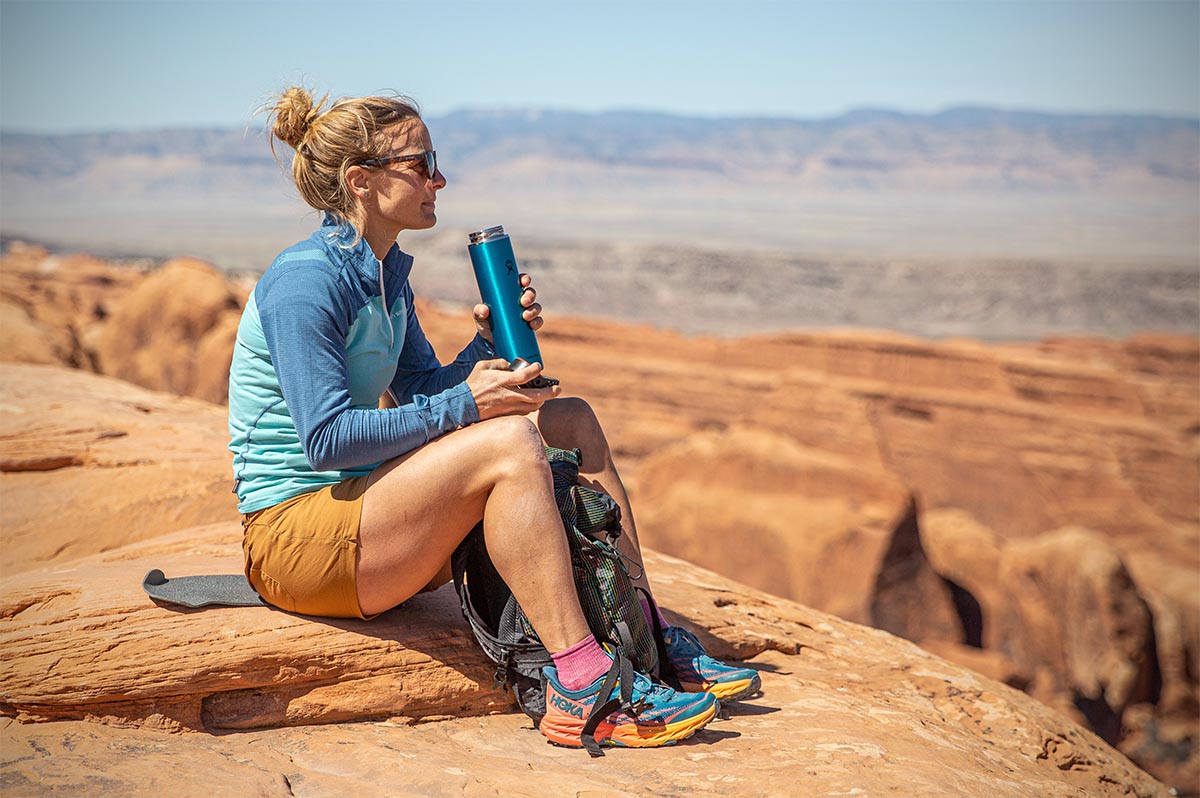
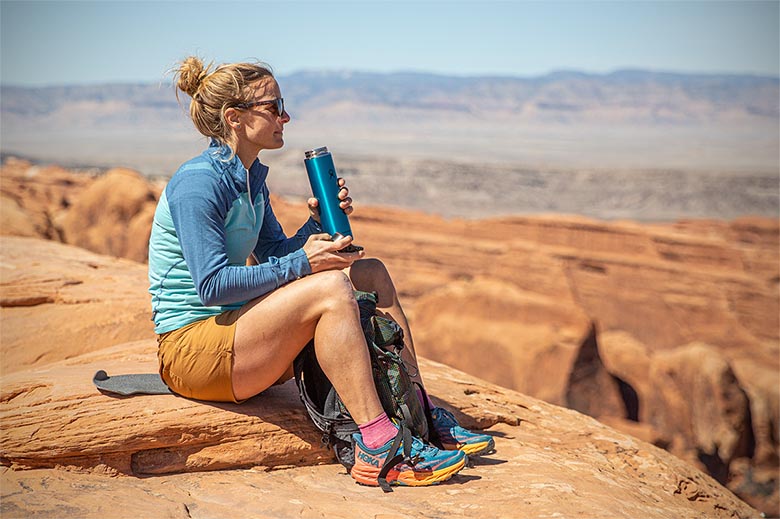
Switchback Travel (Brian McCurdy)
There’s no need for us to tell you the value of staying hydrated, no matter what your day has in store. But if you're looking for advice on which reusable water bottle to choose, that’s something we can help with. We’ve tested countless options over the years on trips near and far, from after-work romps on local trails to multi-day outings in the Patagonia wilderness. Below are our top water bottle picks for 2024, from classic hard-sided plastic models and ultralight and collapsible designs great for backpacking to premium insulated bottles built to keep your liquids at just the right temperature. For more background information, see our water bottle comparison table and buying advice below the picks.
Editor's note: We updated this article on August 16, 2024, to swap Yeti’s Rambler to their lighter-weight Yonder. We also included information about our testing process and expanded our buying advice to touch on sustainability initiatives and options for other outdoor activities.
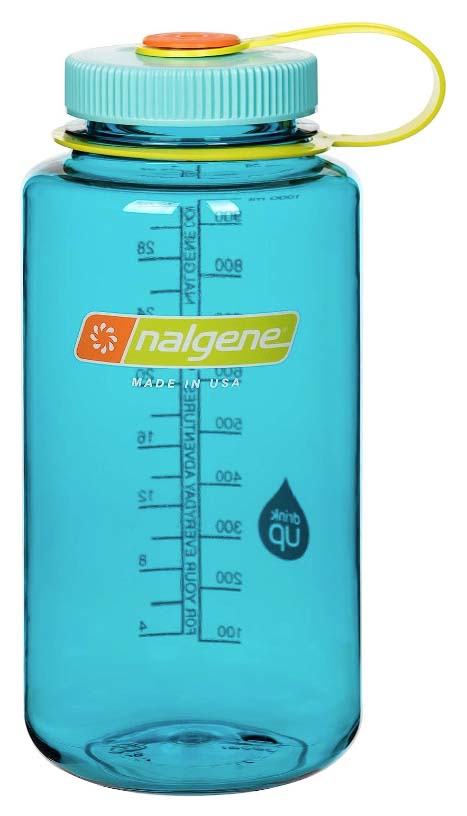 Category: Hiking/daily use
Category: Hiking/daily use
Weight: 6.3 oz.
Insulated: No
Capacities: 16, 32, 48 fl. oz.
What we like: Light, cheap, and very durable—an ideal combination for many hikers.
What we don’t: Minimally insulated and too wide to fit in a cup holder.
Nalgene’s Wide Mouth is arguably the most ubiquitous water bottle on the market and a staple in the outdoors, combining a low weight with a simple but functional build for everything from hiking to daily use. Price is another big selling point: At under $20, it’s an undeniable value when compared to premium insulated options from brands like Hydro Flask and Yeti. You don’t get the all-day ice and heat retention of those designs, but you’re not paying for it, either. And kudos to Nalgene for upping the sustainability focus with the latest “Sustain” collection, which incorporates recycled plastic from single-use bottles. All told, it’s a classic choice among outdoor adventurers of all types and cheap enough that there’s no real worry about losing or breaking it.
Over the years, we’ve brought our Nalgene on countless hikes, deep into the backcountry, and even toted it up long multi-pitch climbs on our harness without any major issues (apart from the expected nicks and scuff marks). The only major drawback is the lack of insulation, which makes it less appealing than its stainless steel counterparts for those who prefer to sip on ice-cold or piping-hot beverages throughout the day (Nalgene does sell insulated sleeves for the 24- and 32-oz. bottles). It’s also too big to fit in most cup holders, although most backpack side pockets are stretchy enough to accommodate the wide shape. These gripes aside, you’d be hard-pressed to find a more versatile or long-lasting water bottle, earning the Wide Mouth Sustain our top billing for 2024.
See the Nalgene Wide Mouth Sustain
 Category: Daily use/hiking
Category: Daily use/hiking
Weight: 9.9 oz.
Insulated: Yes
Capacities: 24, 32, 40 fl. oz.
What we like: Lighter than standard Hydro Flasks without sacrificing much insulating performance.
What we don’t: Expensive and still fairly heavy for hiking.
Since its start in 2009, Hydro Flask has established itself as a class leader in insulated water bottles. Many of their designs are on the heavier end for frequent hikers, including the 13.3-ounce Standard Mouth below, but the Trail Series retains much of what we love about the original models in a 25%-lighter package. Hydro Flask accomplished this by thinning the stainless steel walls, using less burly materials for the cap, and perforating the handle, but the top-notch insulating abilities remain. In fact, when using the Lightweight and original bottles back-to-back, we haven’t noticed any discernible difference in how long they keep our beverages cold or hot, which is quite an impressive accomplishment.
Apart from the 3.4-ounce drop in weight, the Hydro Flask Trail varies from their Standard Mouth bottle below in a few ways. First off, it uses the brand’s wide-mouth cap rather than the standard opening, which is a little harder to drink from on the go. On the flip side, it’s simpler to clean, easier to fill with ice, and still cup holder-friendly (the lack of that compatibility is our main complaint with Hydro Flask’s standard Wide Mouth series). Serious hikers and backpackers can save with a truly lightweight option like the Nalgene above or Platypus Platy below, but the Trail hits a great middle-ground for many: It's sufficiently insulated for everyday use but still reasonably light for toting into the backcountry.
See the Hydro Flask Lightweight Wide Mouth Trail
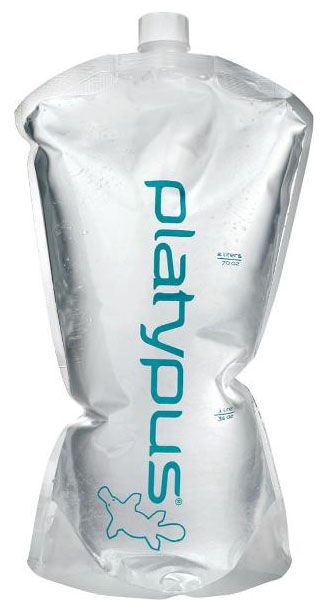 Category: Hiking
Category: Hiking
Weight: 1.3 oz.
Insulated: No
Capacity: 70 fl. oz.
What we like: Feathery light and highly packable—perfect for stuffing into a pack.
What we don’t: Flexible shape often requires two hands for drinking and pouring.
If weight, packability, and cost are paramount to you, it’s hard to beat the Platypus Platy bottle. This soft-sided, 2-liter bottle tips the scales at an impressively low 1.3 ounces (it makes the Nalgene above look downright hefty by comparison), can be rolled up to a size that fits easily in your hand or nearly any crevice in a full pack, and comes in at an affordable $19. It’s especially telling that this bottle has become a very popular option among thru-hikers, who count every ounce to minimize weight and maximize speed over hundreds (and sometimes thousands) of miles. And importantly, durability is quite good considering the thickness of the plastic: Our Platypus bottles have tagged along on numerous camping and backpacking trips over the years, and most have emerged puncture-free.
What you give up in a superlight design like the Platy is a rigid structure. The soft plastic doesn’t hold its shape very well—and it gets worse when the bottle is only partially full—which can make pouring water or even drinking from the bottle a job that requires two hands. Further, the bottle doesn’t fit easily into a cup holder or side pocket of a backpack, and you often have to maneuver it in. In other words, it’s not a practical option for everyday use, but many committed outdoor-goers will appreciate the low weight and compressible build. For a smaller (1L) but otherwise very similar design from Platypus, check out their SoftBottle collection.
See the Platypus Platy 2.0
 Category: Daily use/hiking
Category: Daily use/hiking
Weight: 13.4 oz.
Insulated: Yes
Capacities: 19, 24, 32, 40 oz.
What we like: Innovative spout design makes it easy to drink through the straw or wide-mouth opening.
What we don’t: Heavy for hiking and more moving parts than most competitors.
The bottles above feature fairly standard openings, but a straw can help avoid spills while drinking on the go. Enter Owala’s FreeSip, which boasts a unique hybrid design that provides a best-of-both-worlds solution. How it works: The namesake spout allows you to sip through the built-in straw or tilt the bottle back to chug through the wide-mouth opening. In addition to being incredibly easy to drink from, this system also avoids many of the typical pitfalls that come with choosing between a standard- or wide-mouth opening: The FreeSip is fairly easy to clean and fill with ice, while the narrow shape is nicely sized for sliding into a car cup holder or the side pocket of a daypack. Insulating performance is similarly impressive thanks to the triple-layer stainless steel build that’s rated to keep drinks cold for up to 24 hours (Owala also offers a cheaper 25-oz. plastic version).
We used to have CamelBak’s Eddy+ Renew ranked here, but the Owala gets our vote for a few key reasons. Namely, the Eddy+ has been plagued by reports of broken bite valves and poor flow rates, and the plastic build won’t keep beverages cold for very long. The CamelBak does get the clear advantages in price and weight at $16 and 6.6 ounces (it’s the better choice for hiking), but we feel the Owala’s superior insulating performance is worth those trade-offs for daily use. Keep in mind that neither design is rated for use with hot liquids, and the straw-equipped lids have more moving parts than standard openings, which can lead to added durability issues and leaks over the long term. On the bright side, Owala does back the FreeSip with a limited lifetime warranty that covers workmanship issues and defects (you’ll need to provide proof of purchase from an authorized retailer). For those who don’t love the hassle of cleaning a straw, there’s also a twist-cap version available for the same price.
See the Owala FreeSip Stainless Steel 24 oz.
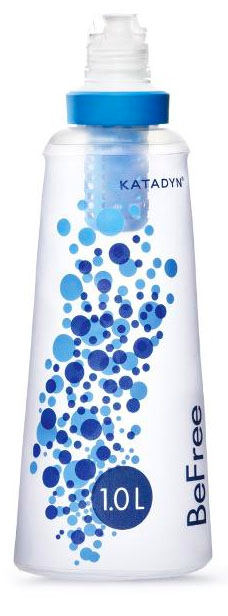 Category: Filter/hiking
Category: Filter/hiking
Weight: 2.2 oz.
Insulated: No
Capacities: 20, 34 fl. oz.
What we like: Water filtration in an ultralight and compressible package.
What we don’t: Does not purify and can be hard to drink from.
Like the Platypus above, Katadyn’s BeFree is another ultralight and collapsible design but adds one key feature that many backcountry travelers need: filtration. Instead of having to carry a separate filter or straw device, you simply fill the bottle up, twist on the combined filter and spout, and drink. In terms of lifespan, the BeFree can treat up to 1,000 liters of water before needing to be replaced, which translates to multiple seasons of use (replacement filters cost $27). All in all, for weight-conscious day hikers, trail runners, and mountain bikers who plan to have access to water along their route, the BeFree’s weight, compressibility, and convenience are hard to match.
What do you sacrifice with the BeFree? Like the Platypus Platy, the soft-sided Katadyn (made by HydraPak) lacks the stiff build of the stainless steel and hard-sided plastic models here and requires two hands for drinking and filling. Its rounded body does stuff more easily into the side pocket of a pack, but it’s still a bit of a hassle for hydrating on the trail when you don’t have both hands free. And it’s important to note that the Katadyn only filters and doesn’t purify—the Grayl Geopress below adds in purification, which means it’s the better option for international travel in less developed regions when viruses are more of a concern. But a filter is fully sufficient for most natural sources, and there’s a reason that many long-distance hikers and trail runners swear by the BeFree.
See the Katadyn BeFree Water Filtration System
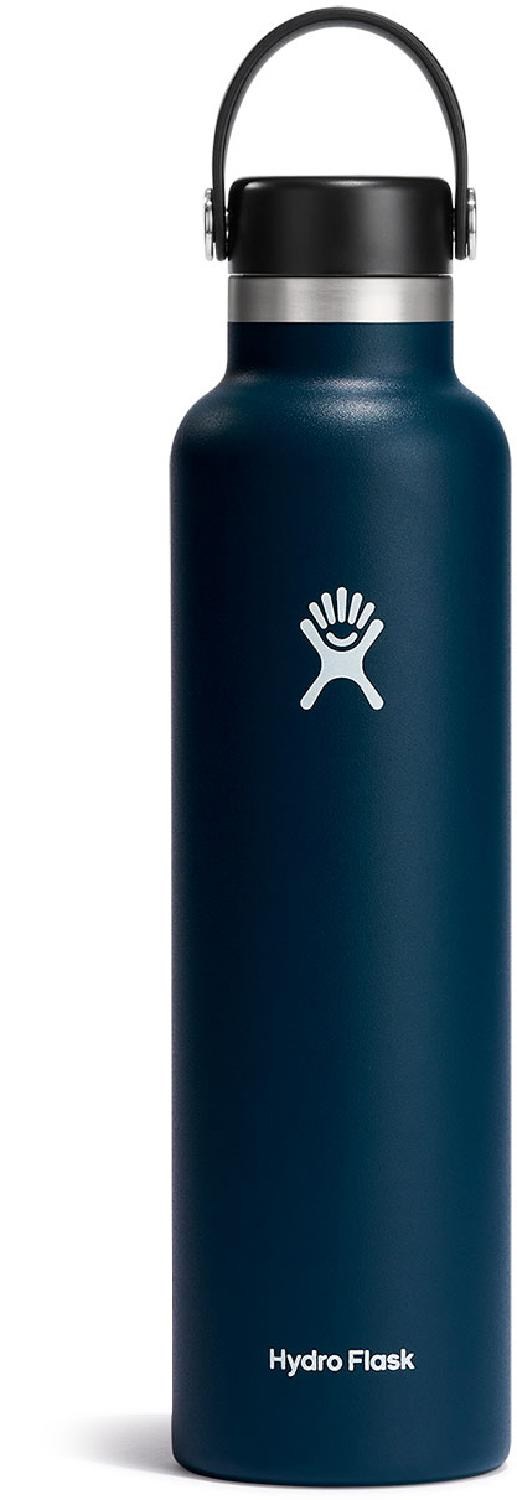 Category: Daily use
Category: Daily use
Weight: 13.3 oz.
Insulated: Yes
Capacities: 18, 21, 24 fl. oz.
What we like: Excellent insulating capabilities and premium build.
What we don’t: Heavy for hiking and harder to clean than a wide-mouth bottle.
We covered Hydro Flask’s Lightweight Trail above, which hits a great balance between weight and ice retention. If the former is of little concern, however, you can save a little cash with the flagship Standard Mouth. Like the pricier Hydro Flask, the Standard Mouth combines excellent insulating performance, a high-quality construction, and a cup holder-friendly design into a smooth-handling yet tough package. Its most impressive feature—and the reason it costs a pricey $40—is the insulated double-wall build that keeps your water cold and coffee hot. In fact, the bottle is rated to keep drinks hot for 12 hours and cold for a whopping 24 hours, and we’ve had ice cubes live a full day in our Hydro Flask without melting.
All that said, the stout build and impressive insulating performance do come with a weight penalty, and we prefer a lighter plastic bottle like the Nalgene Wide Mouth above when venturing out on the trail. Even the aforementioned Lightweight Trail (9.9 oz.) is a better option for those who plan to get outside frequently (and worth the extra $5, in our opinion). To be clear, the Standard Mouth is perfectly serviceable for short hikes, but ounces add up quickly when covering longer distances. And the narrow body does make this bottle a bit more difficult to clean and stuff ice into than its Wide Mouth counterparts (including the Lightweight Trail), but we’ve found it easier and less messy to drink from on the go.
See the Hydro Flask Standard Mouth
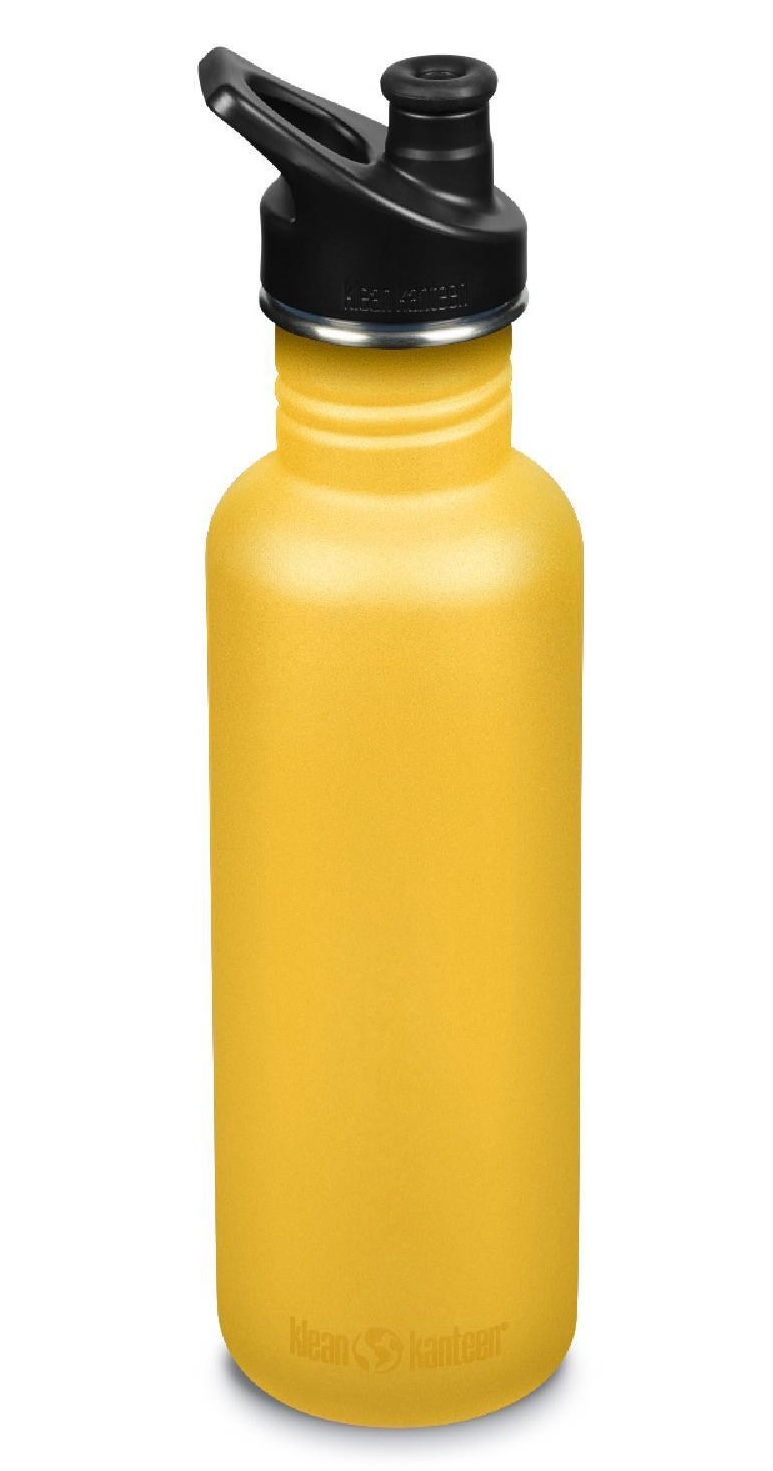 Category: Daily use/hiking
Category: Daily use/hiking
Weight: 7.5 oz.
Insulated: No
Capacities: 18, 27 fl. oz.
What we like: Quality build, looks good, and will keep water cold longer than plastic.
What we don’t: Stainless steel dents easily and the narrow opening isn’t ideal for cleaning.
If you like the idea of a metal water bottle but don’t want to spend a small fortune, Klean Kanteen makes quality single-wall stainless-steel bottles that look great. The 27-ounce Classic comes in at a reasonable 7.5 ounces, and its sport cap means the bottle is both easy to carry and drink from without spilling. We also love the wide range of bright colorways, from standard black to vibrant purple, blue, and red. And even though the Classic is uninsulated (Klean Kanteen does have a separate insulated series), water seems to stay cooler a little longer than with the see-through plastic options on this list.
What are the downsides of going with the Classic? Klean Kanteens are heavier than plastic bottles and can dent if you drop them (this can be an issue if you dent the base of the bottle and it no longer balances upright). The narrow opening on the Classic (44mm) also makes the bottle a little more difficult to clean, but we love how convenient the included sport cap is for drinking on the move (you can also sub in a few other compatible caps, including steel designs and those with loops for carabiners). Finally, we appreciate that the company has made a strong commitment to being environmentally friendly: Klean Kanteen is a certified B Corp, Climate Neutral-certified, and uses recycled materials in most of their drinkware (including the Classic series). For added cold retention, their TKWide collection is vacuum-insulated and made with mostly recycled stainless steel.
See the Klean Kanteen Classic
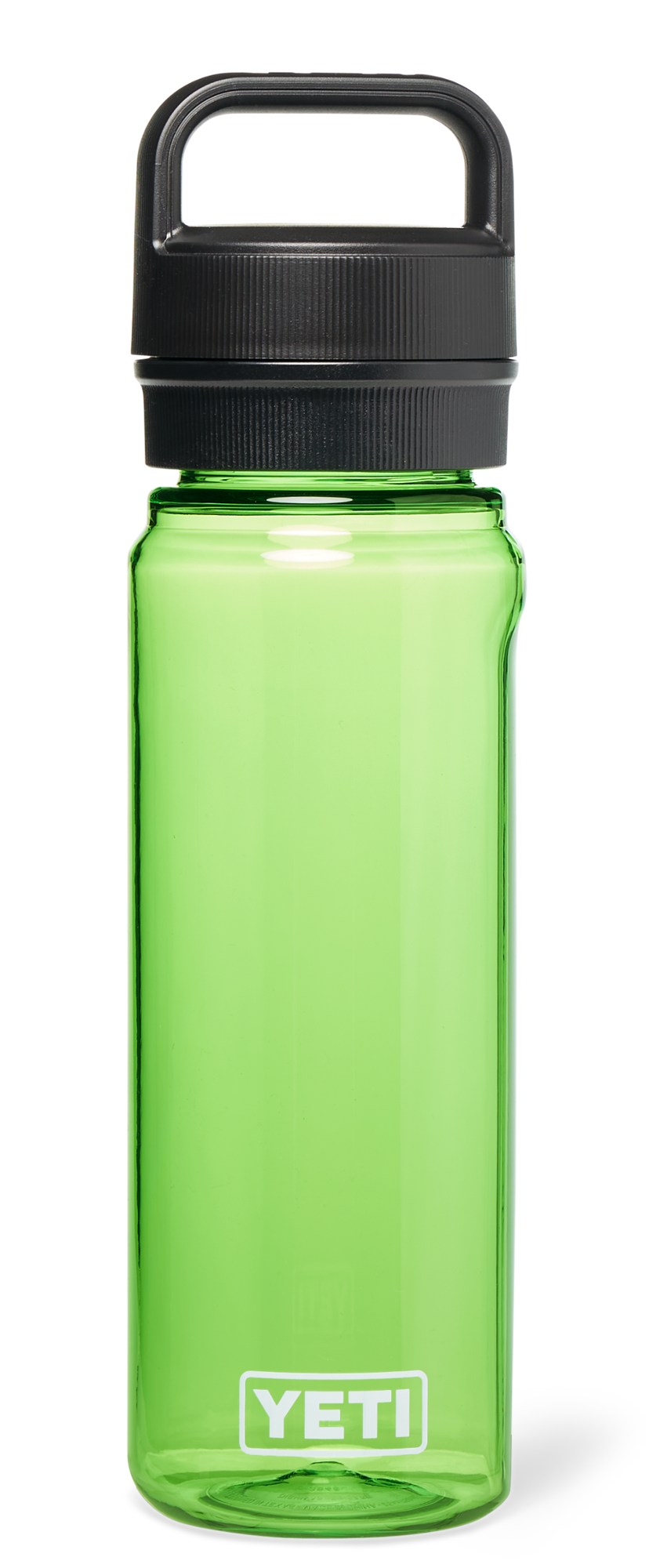 Category: Hiking/daily use
Category: Hiking/daily use
Weight: 9.6 oz.
Insulated: No
Capacities: 20, 25, 34, 50 oz.
What we like: One of our favorite lid designs; versatile size and shape for daily use, hiking, and travel.
What we don’t: Uninsulated design doesn’t keep drinks cold for long.
Yeti is best known for their premium and good-looking coolers, but they bring similar expertise to water bottles. From their lineup, we like the 25-ounce Yonder best: While uninsulated, the plastic construction is highly durable and shatter-resistant, BPA-free, and dishwasher-safe. We particularly love the two-part cap, which consists of the handle that’s noticeably robust and easy to grab or clip to a pack and a spout underneath that’s nicely sized for drinking (both can be removed to fill the bottle with ice or for cleaning). Finally, as we’ve come to expect from Yeti, the Yonder is offered in a nice assortment of classy colorways, most of which are customizable (for an additional cost). It’s hard to get excited about water bottles, but Yeti's done an excellent job making hydration enjoyable with the Yonder.
What pushes the Yonder down slightly in our rankings is its balance of weight and insulating performance. For reference, the Klean Kanteen Classic above costs the same and offers similar capacity but checks in a couple ounces lighter and will keep drinks cold longer thanks to its stainless steel build. Alternatively, those willing to spend up can get far better cold retention with Hydro Flask’s Lightweight Wide Mouth Trail above, which features a double-wall design for just 0.3 ounces more than the Yeti. But if you don’t mind the lack of insulation, we think Yeti has a real winner on their hands with the Yonder, and we love that it’s offered in capacities from 20 ounces all the way up to 50 ounces. Finally, we’d be remiss not to mention Yeti’s popular Rambler here, which trades the Yonder’s plastic build for a double-wall stainless steel construction (resulting in a noticeable boost in heft) but shares the same practical Chug Cap.
See the Yeti Yonder Bottle with Chug Cap
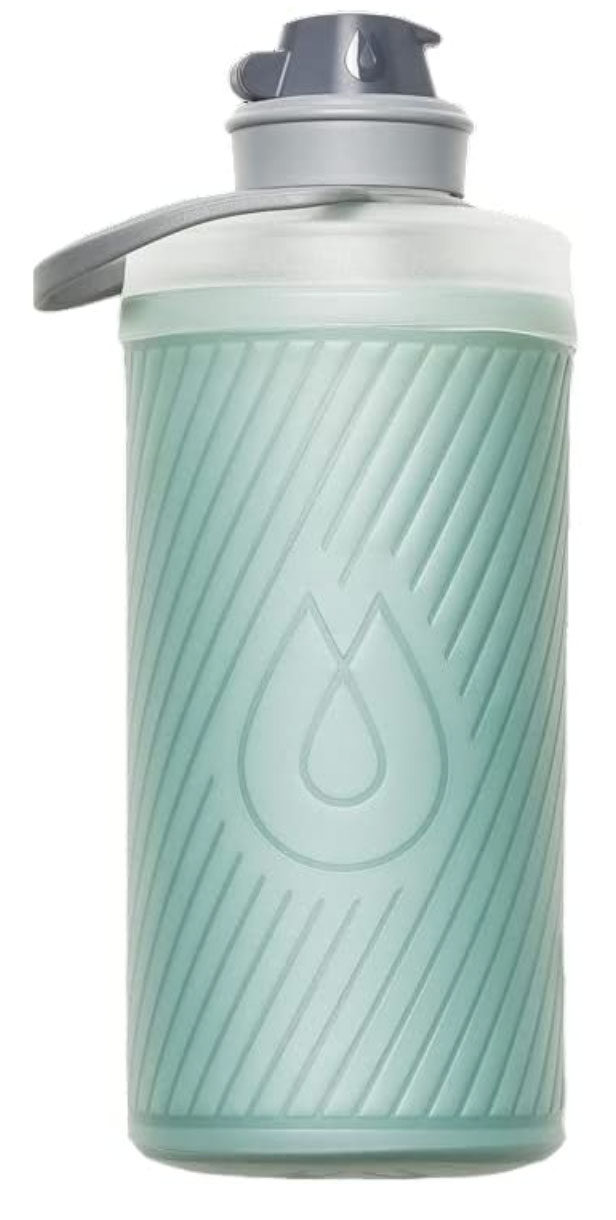 Category: Hiking
Category: Hiking
Weight: 3.6 oz.
Insulated: No
Capacities: 25, 32, 50 fl. oz.
What we like: Double-layer construction adds a nice boost in durability.
What we don’t: Discernible plastic taste (although it does fade over time).
HydraPak is a hydration specialist with a wide assortment of reservoirs, soft flasks, and water bottles for outdoor adventurers of all sorts. The Flux is our favorite soft-sided option from the brand and is impressively well-rounded for its weight. Like the Platypus Platy above, the Flux is very light and packable, and we love that the handle doubles as a way to secure the bottle when collapsed (it wraps around the flask like a hair tie). Additionally, the Flux’s opening is designed to attach directly to most threaded water filters to make backcountry hydration quick and painless, and the twist cap is both leakproof and simple to operate. Finally, durability, in particular, strikes us as a strong suit: HydraPak uses a dual-layer TPU laminate that gives the Flux a notably confidence-inspiring and grippy feel, which is a nice upgrade from the thin and crinkly Platypuses.
HydraPak’s soft-sided water bottle collection also includes the Stash and Stow, both of which are also impressively light and packable (we cover the latter below). The Stow’s flip-top cap is a nice alternative to the Flux’s twist cap (we like both), while the Stash has a wide-mouth opening that we find harder to drink from, especially while moving. But neither bottle has the textured feel of the Flux, which goes a long way in boosting grip and durability. In fact, our only gripe with the Flux is the discernible plastic taste. To be fair, it fades considerably after around a month of consistent use, but there’s still a faint, rubbery aftertaste. This is a fairly common issue among soft flasks, however, and adding flavored electrolyte tablets (like Nuun) does solve the problem.
See the HydraPak Flux
 Category: Daily use
Category: Daily use
Weight: 1 lb. 5 oz.
Insulated: Yes
Capacities: 17, 22 fl. oz.
What we like: Detachable travel cup is great for sharing your beverage with a friend.
What we don’t: The most expensive non-filter-equipped bottle here.
CamelBak has been in the hydration business for more than 30 years, but that doesn’t mean they’ve stopped innovating. Their MultiBev is a case in point and pumps some life into the water bottle market. The most notable feature is the built-in travel cup, which twists off from the middle of the bottle and allows you to quickly and easily share some of your beverage with a friend (it’s also nice for rationing tea or hot chocolate on cold days). The second unique feature is the storage-equipped cap that stashes the silicone lid for the travel cup or small items like a couple of tea bags or electrolyte tablets (we almost exclusively use it for the latter, as the lid seems superfluous). Tack on competitive insulating performance—up to 24 hours for cold drinks and 16 for hot beverages (it’s a little less for the 17-oz. version)—and the CamelBak stands out as one of the most inventive bottles currently available.
All that said, the CamelBak MultiBev’s added components do come with price and weight penalties. It’s true that the two-in-one functionality helps justify the steep price tag—for reference, a Hydro Flask Standard Mouth bottle plus their 12-ounce Outdoor Tumbler would run you an additional $15—but $50 is undoubtedly a lot to spend on a water bottle (especially one that doesn’t include a filter). And weight-wise, the CamelBak isn’t well suited for hiking at a hefty 1 pound 5 ounces. You can leave the travel cup behind to shave some weight, but that would leave the bottom of the bottle exposed to dents and dings. In other words, the MultiBev doesn’t stand out from a value or versatility standpoint but fills a nice niche in the water bottle market.
See the CamelBak MultiBev 22 oz.
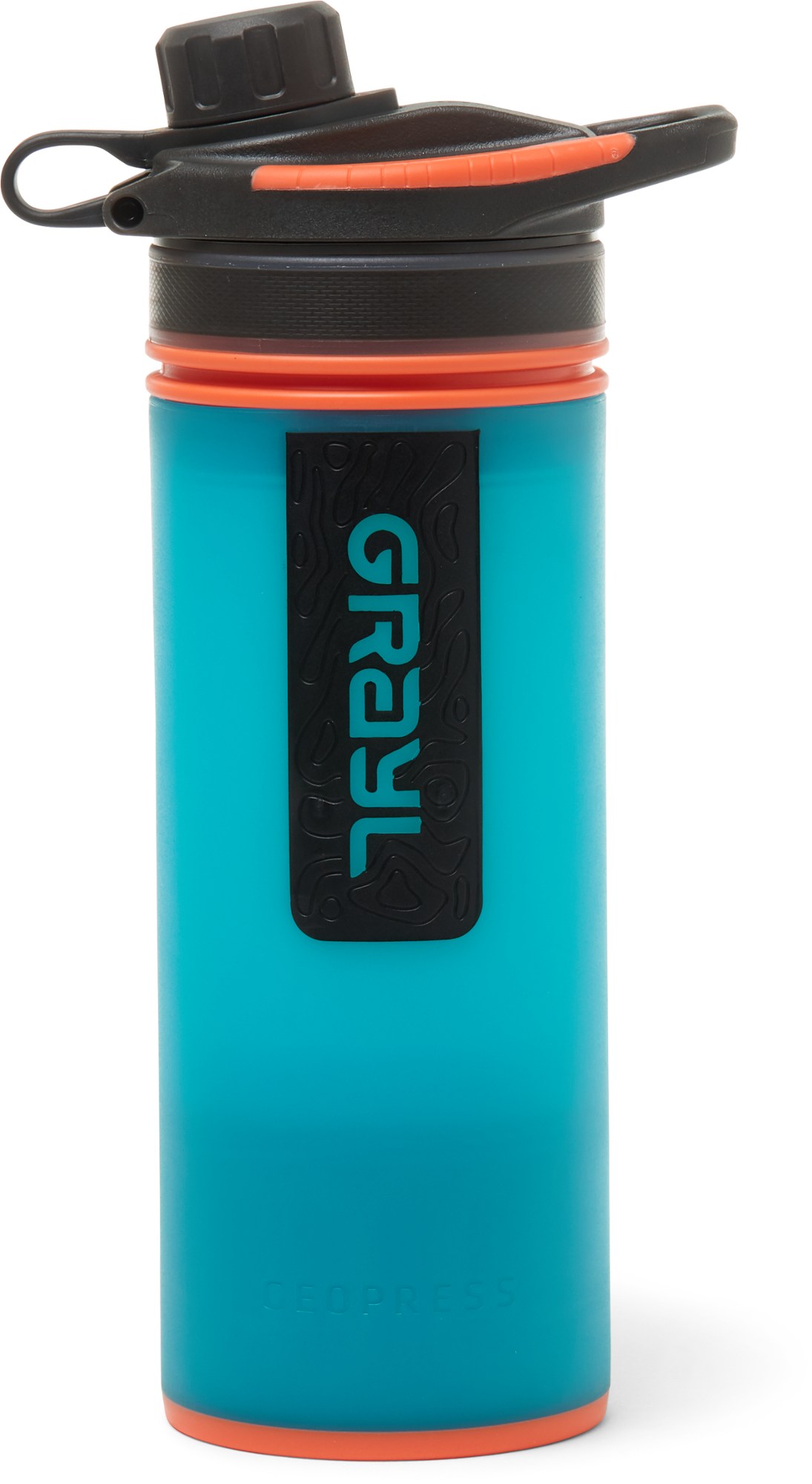 Category: Filter/daily use
Category: Filter/daily use
Weight: 15.9 oz.
Insulated: No
Capacity: 24 fl. oz.
What we like: Filtration and purification in a portable design.
What we don’t: Requires consistent access to a water source; replacement cartridges will add to the already-steep cost.
For globetrotters and hikers traveling internationally, it’s hard to beat the convenience of the Grayl Geopress. While the Katadyn BeFree above filters out protozoa and bacteria, the Grayl purifier takes it a step further by adding protection against viruses too small for most filters, including Hepatitis A, Rotavirus, and Norovirus. The process is simple: Fill the outer shell from any water source, replace the inner unit that holds the cartridge, and use your body weight to press down. In about 15 seconds, you’ll have 24 ounces of purified and filtered water.
There’s one very obvious downside to this low-capacity system: Travelers will need consistent access to a water source to stay hydrated. Further, the Grayl will require a new cartridge after only 250 liters or 65 gallons, which costs $30 a pop. However, it’s worth mentioning that most purifiers don’t filter sediment, while the filter-and-purifier combo of the Geopress does restrict particles like silt and sand from seeping in. In the end, we think the Grayl is a great alternative to disposable plastic bottles for frequent travelers and those headed abroad, but its practicality is limited for uses like backpacking trips. In these instances, we’d go with the much cheaper Katadyn BeFree above (or use a separate, larger-capacity gravity or pump filter). For a lighter and more compact option, Grayl now offers the UltraPress (12.5 oz.), which is also available in a titanium “Ti” version with an outer cup that can be used to heat water or cook simple meals over a camp stove.
See the Grayl Geopress
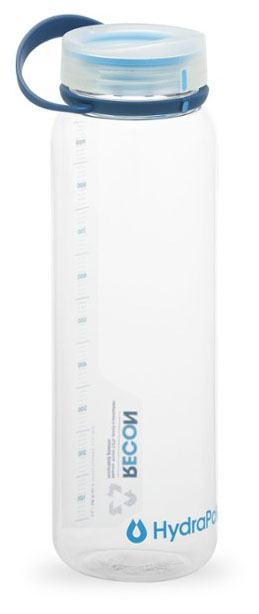 Category: Hiking/daily use
Category: Hiking/daily use
Weight: 6.7 oz.
Insulated: No
Capacities: 17, 25, 32 fl. oz.
What we like: Very easy to drink from and nice slim shape.
What we don’t: The twist cap isn’t entirely intuitive.
HydraPak’s Recon series might appear unremarkable at first glance, but the brand has packed a surprisingly thoughtful feature set into these bottles. For starters, the plastic build utilizes 50% recycled content, the handle is nicely sized and easy to grab (and durable enough to clip to a pack or climbing harness), and the slender shape is perfectly fashioned for car cup holders or sliding into the side pocket of a backpack. And as a small but immediately noticeable bonus, HydraPak added an indented groove along one side, which makes it easy to grip even with gloves on. Finally, the Recon is dishwasher-safe, stain- and odor-resistant, and BPA, BFS, and BPF-free (the latter two have been used as replacements for BPA but are remarkably similar in makeup and could pose similar issues, although they haven’t been tested as extensively yet).
Our only gripe with the Recon is its “smooth flow” twist cap, which isn’t entirely intuitive and requires tightening the cap and then untwisting it 180 degrees to maximize flow rate. For reference, we admittedly had to go to HydraPak’s website and watch a video on how the cap works when we first received the bottle, and it still sometimes takes us a couple tries of twisting and untwisting to get that perfect, smooth flow. But apart from this minor learning curve, the Recon has proven to be impressively easy to drink from, fully leakproof, and highly durable to boot.
See the HydraPak Recon
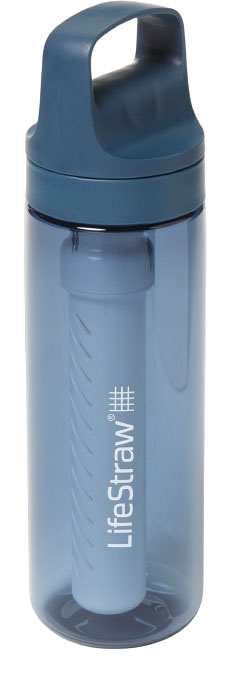 Category: Filter/daily use
Category: Filter/daily use
Weight: 8.7 oz.
Insulated: No
Capacities: 22, 34 fl. oz.
What we like: Easier to drink from and longer lifespan than the Katadyn BeFree above.
What we don’t: It’s also heavier, bulkier, and less versatile.
LifeStraw is best known for their namesake straw filter, which allows backcountry travelers to sip straight from bodies of water without any pumping or squeezing. They’ve taken that technology and integrated it nicely into water bottles, including the plastic Go bottle listed here. The filtering process is essentially the same: A cartridge inside the straw system contains microscopic pores that strain out harmful microorganisms like protozoa (such as Giardia) and bacteria (like E. coli and Salmonella). And the LifeStraw’s filter can handle up to 1,000 gallons before it’ll need replacing, which is almost four times the lifespan of the Katadyn BeFree above (the BeFree's 1,000-liter rating converts to around 265 gallons).
Another key difference between the LifeStraw and Katadyn is drinkability: Whereas the BeFree has a malleable and collapsible build that requires two hands to sip and fill, the Go’s hard-sided plastic body is easy to carry and essentially effortless to drink from. The trade-off is increased weight and bulk, and unlike the squeezable Katadyn, you can’t use the LifeStraw to fill your friend’s bottle with clean water, nor can it be rolled up and stuffed into the crevice of a pack. LifeStraw does offer their collapsible Peak Squeeze, which costs $38 for the 650 mL capacity and fills the same niche as the BeFree but is slightly heavier and requires a syringe (included) for proper cleaning. In the end, we still prefer the Katadyn for fast-and-light missions, but the LifeStraw Go is a nice alternative for those who want the convenience of a hard-sided bottle.
See the LifeStraw Go Series 22 oz.
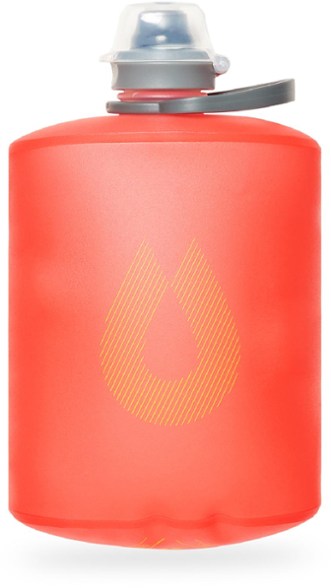 Category: Hiking
Category: Hiking
Weight: 1.6 oz.
Insulated: No
Capacities: 17, 34 fl. oz.
What we like: Feathery light, collapsible, and easy to drink from while moving.
What we don’t: Cap is prone to cracking.
We covered HydraPak’s Flux above, but their Stow takes the ultralight crown at a scant 1.6 ounces, making it the second-lightest bottle on our list (right behind the 1.3-oz. Platypus Platy above). And importantly, the Stow is impressively functional for such a minimalist design: It’s compatible with most water filters, sports handy capacity measurements on one side for tracking hydration, and is very easy to drink from while on the go with a simple twistable silicone nozzle (just squeeze the bottle). And when you’re out of water, just roll the malleable bottle up and secure it with the plastic handle—it compresses down enough to fit in a jacket pocket.
The Stow’s lightweight and collapsible design has made it one of our go-to options for toting up multi-pitch climbs: Simply attach the integrated plastic handle with a carabiner to a gear loop on your harness (it can also be secured to the outside of a pack). We’ve had some concerns of the thin strap breaking or coming undone while chimneying and scraping our way up offwidth routes, but it hasn’t failed to date. And the plastic body and multi-component cap don’t seem particularly hardwearing either, with a potential for cracks and punctures over time (many users have reported the cap splitting, but ours is in good shape after over a year of consistent use). But at just $19 for the 17-ounce version, the Stow is a cheap, light, and packable supplementary bottle to bring along on any backcountry adventure. It’s also available with a fun mountain graphic for the same price.
See the HydraPak Stow
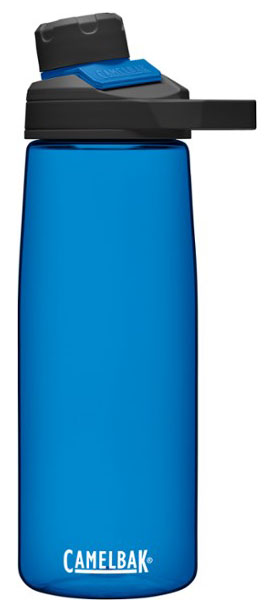 Category: Daily use/hiking
Category: Daily use/hiking
Weight: 6 oz.
Insulated: No
Capacities: 20, 25, 32, 50 fl. oz.
What we like: Nicely sized opening and good assortment of capacities and colorways.
What we don’t: Magnetic cap strikes us as a point of weakness.
CamelBak’s Chute Mag has been around for years but remains popular for its magnetic cap design that provides a leakproof seal and secures conveniently out of the way when drinking. And the opening itself is perfectly sized for drinking: just wide enough to get a decent gulp without accidentally spilling water all over the place. Recently updated with the use of recycled materials (hence the “Renew” designation), the Chute Mag checks most of the boxes we look for in a quality non-insulated design: It’s lightweight, easy to carry, cup holder- and side pocket-compatible, and sold in a nice assortment of capacities and attractive colorways.
Why do we have the CamelBak Chute Mag Renew ranked here? Some users report being confused by the cap—it requires both closing and twisting to prevent leaks—which is an understandable mistake to make (the magnet pulls it in and gives a false sense of security). This can lead to unwanted spills and leaks, and we have concerns about the long-term durability of the thin plastic hinge connecting the cap and bottle. Unless the magnetic top is a must-have for you, we’d rather save with the Nalgene Wide Mouth above, which has fewer breakable parts and will still function just fine should the connecting strap break (ours hasn’t after years of use).
See the CamelBak Chute Mag Renew
| Bottle | Price | Category | Weight | Material | Capacities | Insulated |
|---|---|---|---|---|---|---|
| Nalgene Wide Mouth | $17 | Hiking/daily use | 6.3 oz. | Plastic | 16, 32, 48 fl. oz. | No |
| Hydro Flask Trail | $45 | Daily use/hiking | 9.9 oz. | Stainless steel | 24, 32, 40 fl. oz. | Yes |
| Platypus Platy 2.0 | $19 | Hiking | 1.3 oz. | Plastic | 70 fl. oz. | No |
| Owala FreeSip | $28 | Daily use | 13.4 oz. | Stainless steel | 19, 24, 32, 40 oz. | Yes |
| Katadyn BeFree | $45 | Filter/hiking | 2.2 oz. | Plastic | 20, 34 fl. oz. | No |
| Hydro Flask Standard | $40 | Daily use | 13.3 oz. | Stainless steel | 18, 21, 24 fl. oz. | Yes |
| Klean Kanteen Classic | $20 | Daily use/hiking | 7.5 oz. | Stainless steel | 18, 27 fl. oz. | No |
| Yeti Yonder | $25 | Hiking/daily use | 9.9 oz. | Plastic | 20, 25, 34, 50 oz. | No |
| HydraPak Flux | $27 | Hiking | 3.6 oz. | Plastic | 25, 32, 50 fl. oz. | No |
| CamelBak MultiBev | $50 | Daily use | 1 lb. 5 oz. | Stainless steel | 17, 22 fl. oz. | Yes |
| Grayl Geopress | $100 | Filter/daily use | 15.9 oz. | Plastic | 24 fl. oz. | No |
| HydraPak Recon | $18 | Hiking/daily use | 6.7 oz. | Plastic | 17, 25, 32 fl. oz. | No |
| LifeStraw Go 22 oz. | $45 | Filter/daily use | 8.7 oz. | Plastic | 22, 34 fl. oz. | No |
| HydraPak Stow 500 ml | $19 | Hiking | 1.6 oz. | Plastic | 17, 34 fl. oz. | No |
| CamelBak Chute Mag | $16 | Daily use/hiking | 6 oz. | Plastic | 20, 25, 32, 50 fl. oz. | No |
Staying hydrated is key to any successful outdoor adventure, whether you’re taking an after-work stroll on a local trail or embarking on a multi-day mission into the backcountry. Given our outdoor roots, it’s not too surprising that this round-up was one of the first ever published on Switchback Travel back in 2014. While many of the picks above have changed throughout the past decade, some longtime favorites have remained, including the Nalgene Wide Mouth, Platypus Platy, and CamelBak Eddy. To reflect the many ways in which people hydrate, the entire Switchback team has had a hand in testing, and we’ve taken countless bottles all over the world on hiking, backpacking, climbing, and skiing trips. Managing editor Sarah Nelson currently manages the guide, curating the list based on firsthand testing and feedback from the rest of the team. Based in the Lake Tahoe area but often on the road traveling, Sarah knows the value in staying hydrated and never leaves home without a water bottle in hand.
In order to score a spot above, each water bottle had to stand out in one or more ways. To gauge performance, we put each design through its paces by filling it with electrolytes and other drink mixes, stuffing it in our pack, taking it on morning commutes, and generally putting it through day-in and day-out use. We take a close look at each component, from the mouth opening to the cap type and handle, and make sure to take ease of cleaning into consideration, too. Of course, drinkability and longevity are two of our primary ranking metrics, and we look for designs that make hydration quick and easy while holding up well over the long term. As always, we’ll continue to update our list above based on our comparative testing, adding and removing options as the market evolves. Finally, if you prefer a reservoir for on-the-go hydration, we took a similar approach with our round-up of the best hydration bladders.
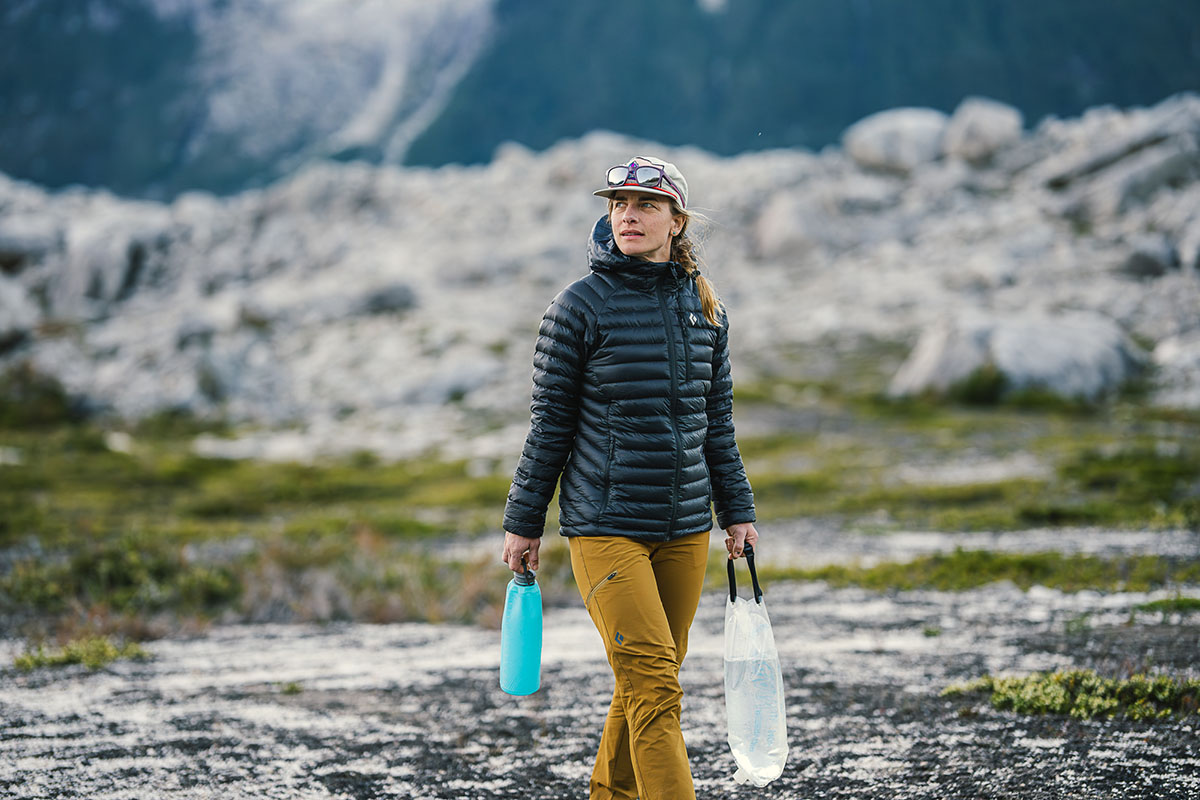
There are many obvious benefits to switching to a reusable water bottle over disposable, and the most obvious is reducing waste. By some estimates, over 50 billion disposable plastic bottles are produced each year—that’s a lot of plastic that can end up along the sides of roads, in bodies of water, along trails, and in parks. But even if we table the environmental concerns, there are many other great reasons to make the switch to reusable bottles.
While the choices above range in price from around $15 to $100, bottled water can easily run you that same cost in just a month or two (for reference, a 24-count of Glaceau Smartwater costs around $50 at the time of publishing). Depending on the build quality and material (and how well you take care of it), a reusable bottle should last for years and years. However, it’s worth noting that some disposable bottles—Smartwater specifically—are popular among thru-hikers for their feathery weight, easy-to-drink-from flip cap, and narrow, long shape that can be quickly secured with a pack strap. But if you’re not hitting the PCT anytime soon, we think the cost is well worth it. Disposable water bottles might be the convenient grab-and-go option, but investing in a reusable bottle will pay off quickly. Plus, some of the options above are downright stylish, which certainly isn’t a bad thing.
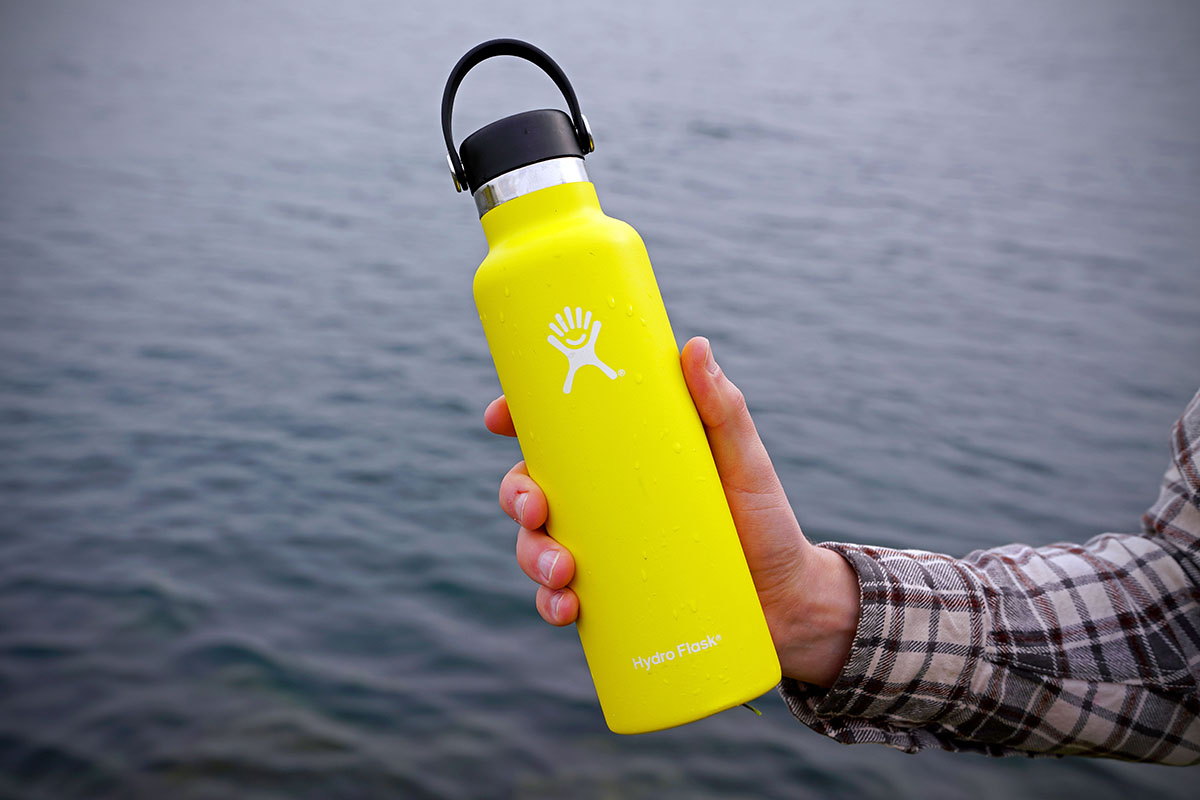
Daily Use
The most common use for a water bottle is to stay hydrated in daily life: commuting, at work, and around town. In general, everyday bottles need to be durable enough to withstand the occasional drop, and other features we look for include a good hand feel and cup holder compatibility. Considerations like weight are less important here, and while it’s often nice to have a spout that’s easy to drink out of while on the go, both wide-mouth and narrow-mouth bottles are popular options. Most of the water bottles that made our list excel in everyday life (soft flasks and dedicated filter bottles are two exceptions), and your own priorities will push you toward a specific material type and whether or not you need insulation.
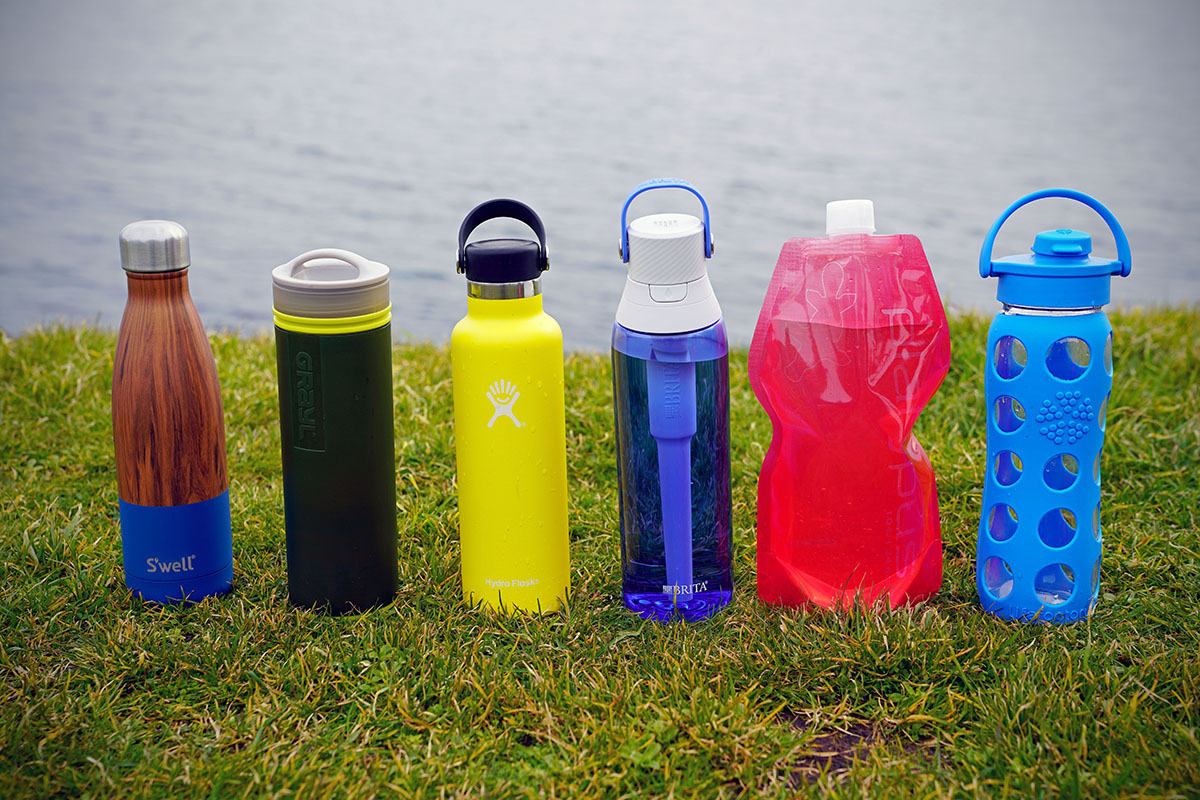
Hiking
Bottles built for hiking and other outdoor pursuits are light but tough, ranging from around 1 to 10 ounces in weight but built to handle drops and rough use typical of the outdoors. Non-insulated models like the Nalgene Wide Mouth are a classic choice, with a 6.3-ounce weight and hardwearing plastic design that stands up well to regular use and abuse. If space is a concern, ultralight and stowable options like the Platypus Platy 2.0 and HydraPak Flux roll down incredibly small and stuff easily into the crevice of a pack. And if you’ll be outside in extreme temperatures and don’t need to worry about carrying a little extra weight on your back, a burly insulated model can also be a viable option. Hydro Flask and Yeti bottles are popular among campers, rafters, and motorized backcountry explorers for their sturdy builds and ability to keep beverages cold or hot for hours at a time, although these hefty designs have limited appeal for most hikers, especially those covering longer distances on foot.
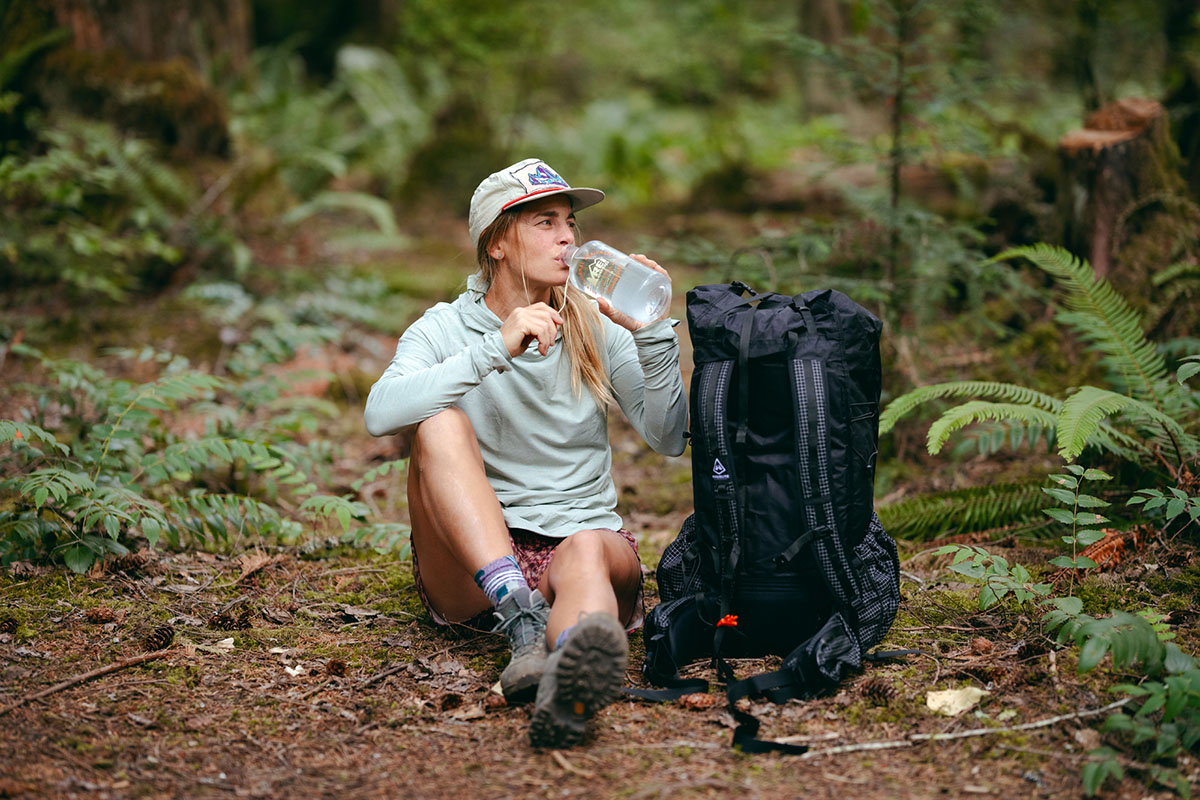
Filter
For hikers, runners, and travelers who desire an all-in-one water bottle and filter, there are a growing number of options that fit the bill. Designs like the Katadyn BeFree integrate a filter into the cap/straw, and Grayl’s Geopress takes it a step further by adding virus-neutralizing purification to the mix. This makes it the better choice for international travelers, although most backcountry-goers will be perfectly fine with the aforementioned Katadyn for protecting against protozoan cysts and bacteria. If you plan to embark on a long trip with a group, however, we prefer bringing along the traditional separate filter or purifier. You’ll get a higher output and capacity from those systems, as well as more flexibility to fill up multiple bottles. To see a full breakdown of options, see our article on the best backpacking water filters and purifiers.
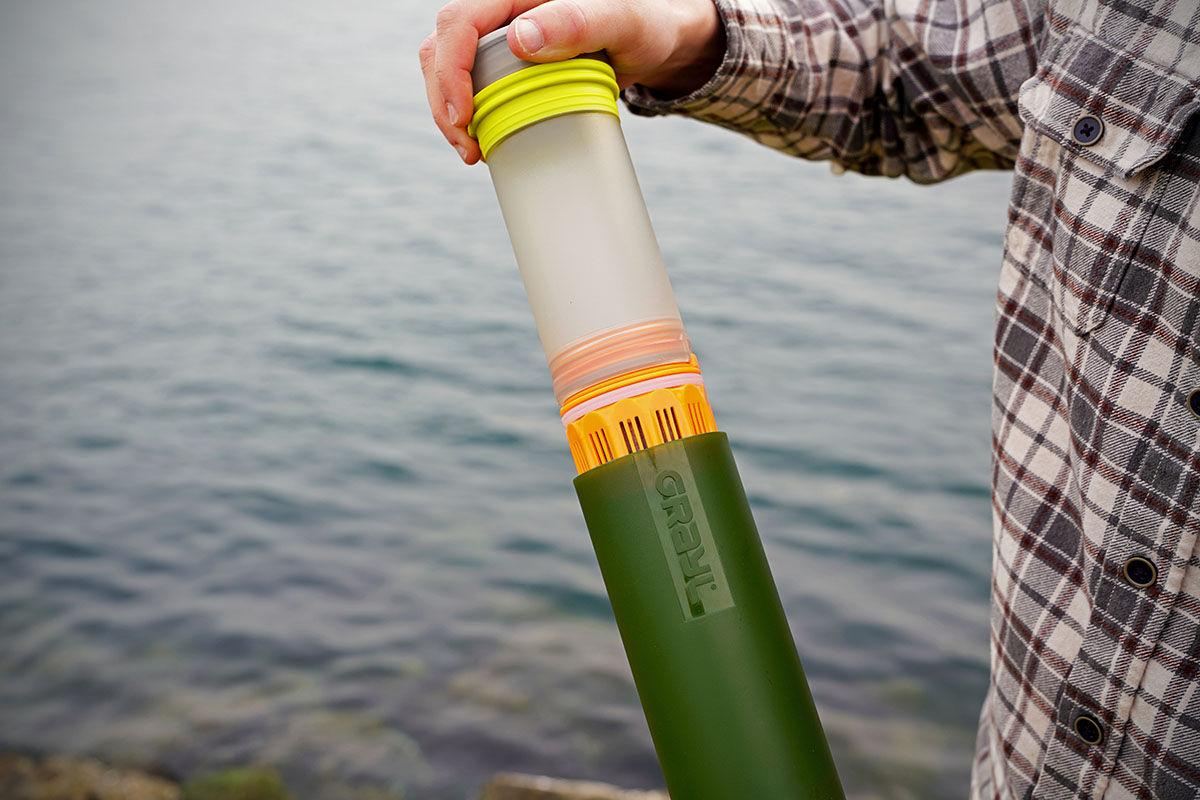
All of the bottles on our list above are constructed using one of two materials: plastic or stainless steel. Glass bottles are another option for daily use and growing in popularity due to lack of plastic or metallic taste, but the obvious downside is that they’re very vulnerable to breaking or shattering. For this reason, we didn’t include any glass bottles in our rankings, but Lifefactory’s Glass 22-Ounce with Active Cap is a crowd favorite.
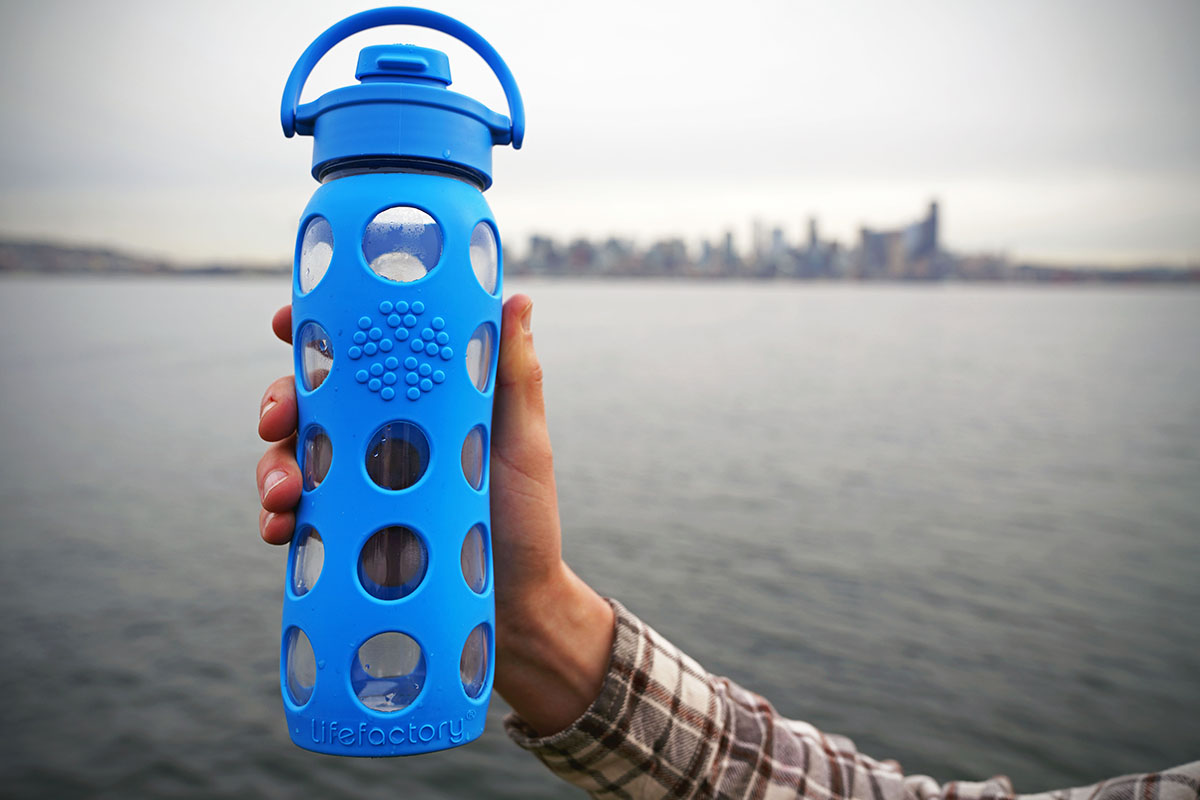
Plastic
Across all of the water bottle categories above, plastic is still the most commonly used material in 2024. The BPA scare from old Nalgene bottles (they’re now all BPA-free) has done little to dent enthusiasm for the material: It’s affordable, in most cases pretty durable (although less so than most stainless steel), and lightweight. The downsides of plastic bottles are that they can develop a plasticky smell if you don’t consistently clean them or leave water inside for a long time, and they typically do not offer any insulation.
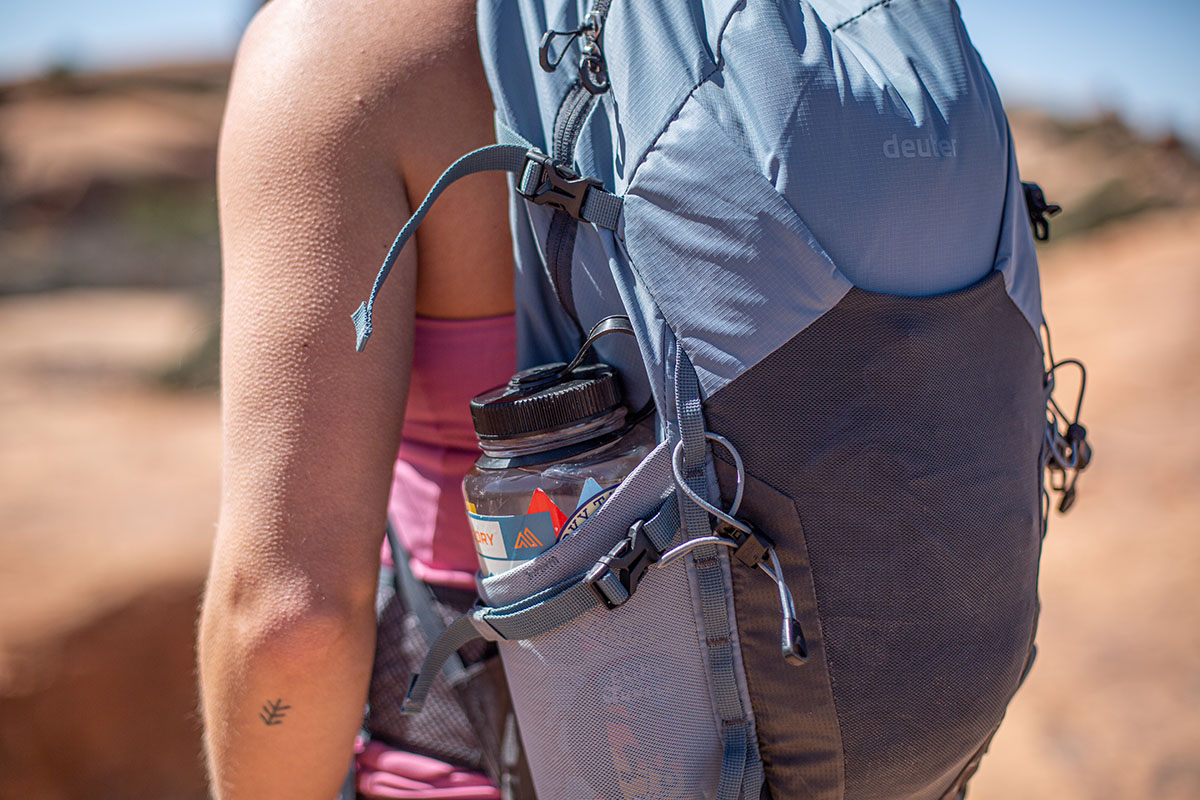
Stainless Steel
For those who don’t like the occasional taste or smell of plastic in their water bottles, stainless steel bottles from brands like Hydro Flask, Klean Kanteen, and Yeti above are extremely popular. While it’s true that these bottles can have a bit of a metallic taste, they are the more agreeable option for most people. Stainless steel bottles are also known to be very tough and are more likely to dent rather than crack or puncture like a plastic bottle. Further, they are fairly easy to clean and rid of lingering tastes, even if you switch between coffee and water during the day. Finally, for those wanting an insulated bottle, a double-wall stainless steel design is the way to go. Keep in mind that these can be fairly expensive, however, with prices hovering in the $40-$50 range for 24 to 32 ounces of capacity.
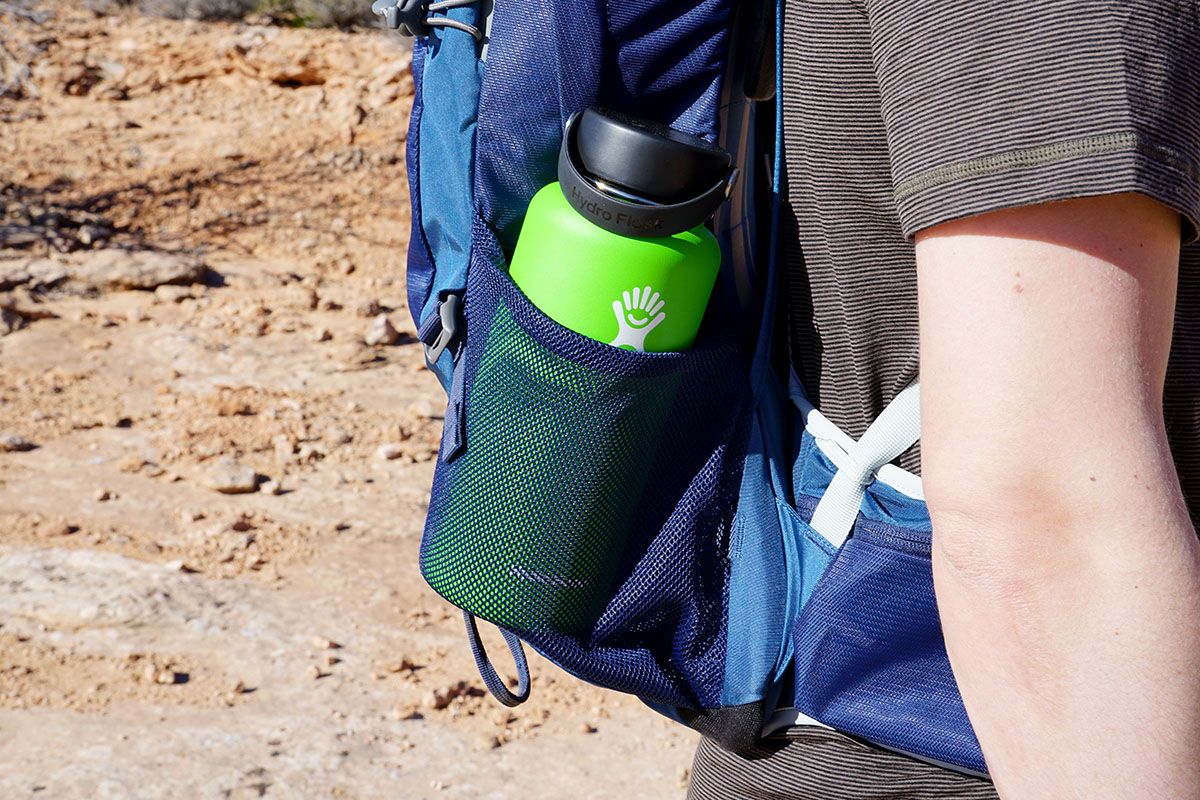
Double-wall insulated bottles are a fantastic invention—they can keep beverages hot or cold for hours at a time, even in pretty extreme temperatures. For daily use, an insulated bottle like the Hydro Flask Standard Mouth is our preferred choice because it covers all our water and coffee drinking needs. But quality insulated designs are about three to four times more expensive than a comparable non-insulated bottle and add quite a bit of weight. As a result, even though we would love to carry a Hydro Flask while backpacking in the heat, it’s just not a practical solution. Our take is if you want to invest in a nice water bottle and don’t care too much about weight, you’ll most likely be very happy with an insulated bottle.
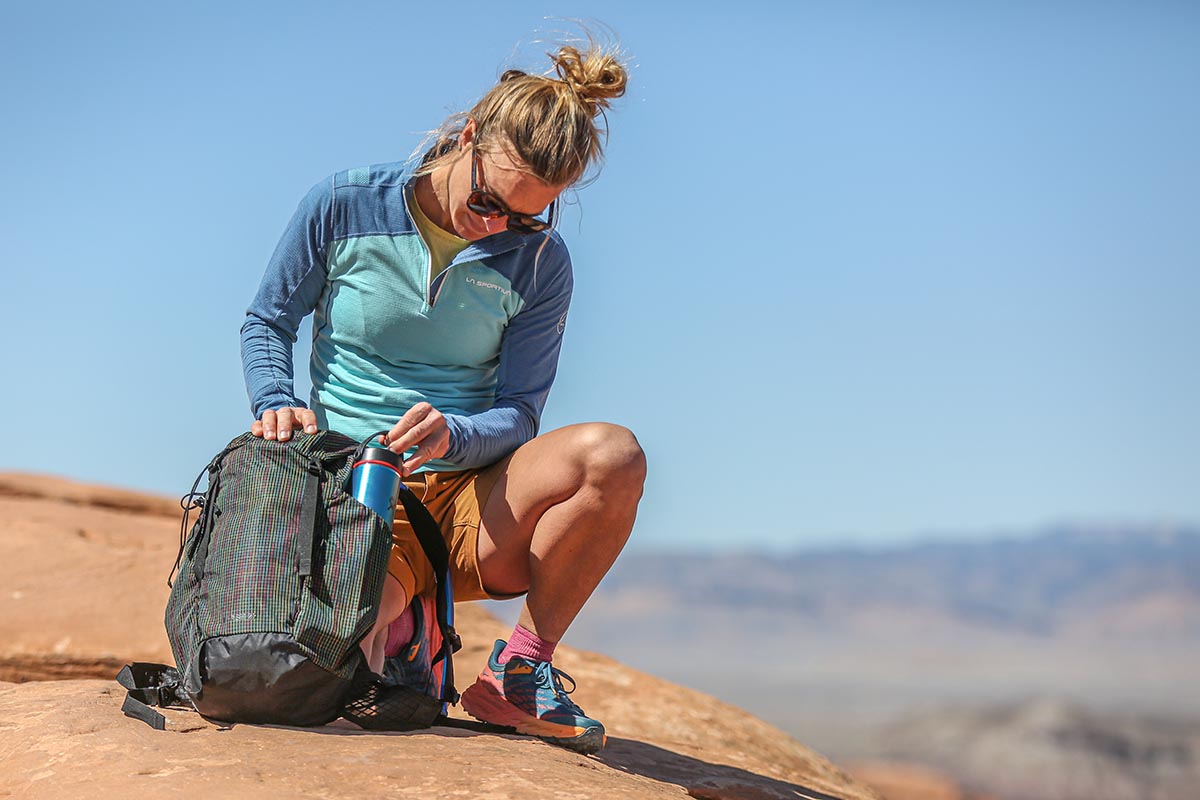
A further consideration is whether you want a hard-sided or soft-sided bottle. For everyday use, hard-sided is the preferred option: It has a solid structure that fits easily into a cup holder or backpack side pocket and is much easier to drink from. Hard-sided bottles come in a variety of styles, including insulated and non-insulated stainless steel or plastic, both of which are known for their durability.
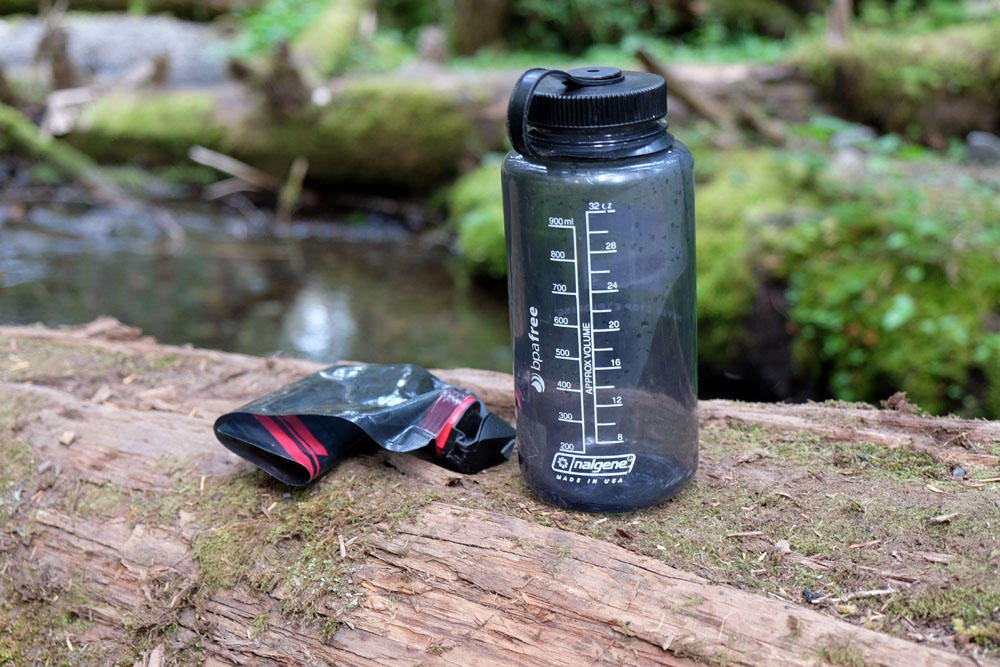
Soft-sided bottles, on the other hand, trade durability for compressibility and weight. Ultralight bottles like the Platypus Platy 2.0L pack down really small and weigh less than 2 ounces. These are great options when you don’t have much space—we love them for trail running, fastpacking, and multi-pitch climbing—or want the extra water storage at camp without having to carry bulky bottles on the trail. However, they aren’t very convenient as daily pieces, as the flexible shape has a tendency to bend when tilting to drink or pour water. Unless the weight and packability are paramount to you, we recommend going with a hard-sided bottle.
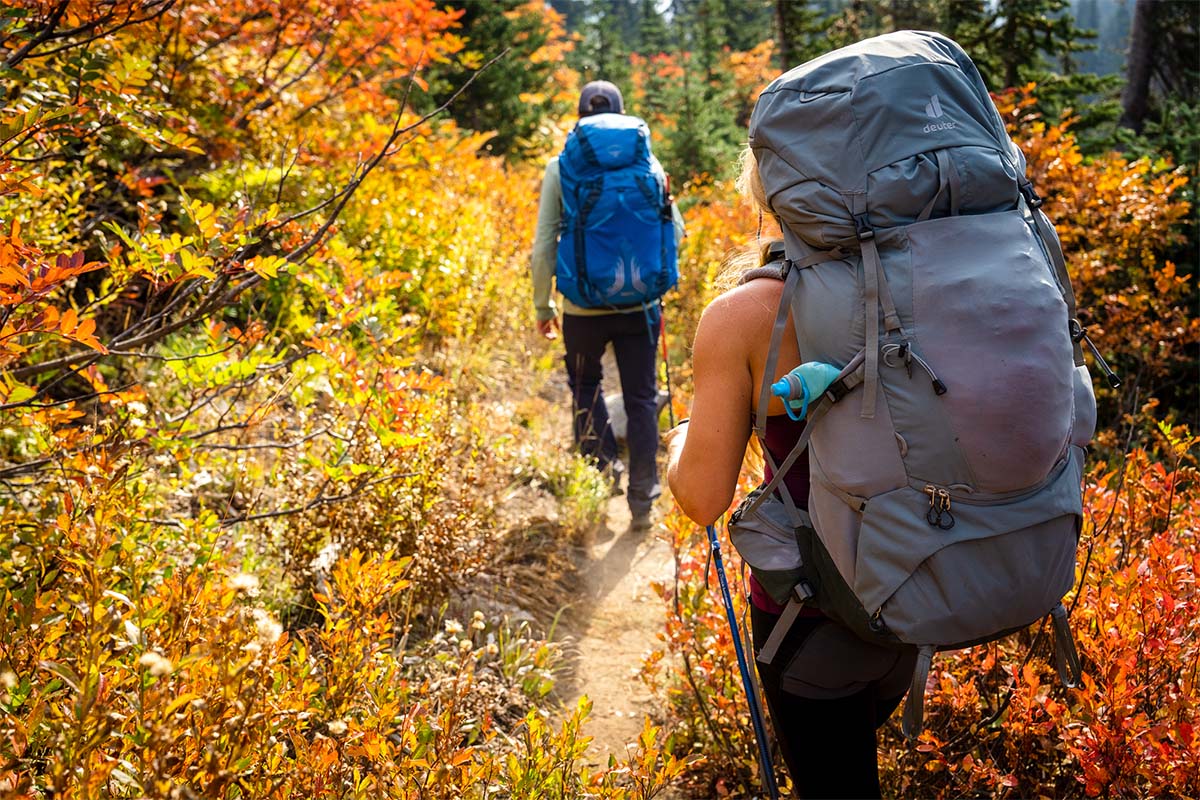
Just about every water bottle we have included above is offered in a range of sizes, which we’ve listed in our specifications. On the small side are bottles around 16 to 18 ounces, which are good for those who value the compact size, but you’ll find yourself filling up your bottle quite a few more times throughout the day. Our preference is to size up to the 24- to 32-ounce range to minimize fill ups without being too bulky to carry around. Some models are offered in up to 64-ounce capacities, which are great for water storage (particularly the insulated models for places like remote construction sites), but those are too large for most people to haul around. A final consideration is for folks who put their water bottle in the side pocket of a backpacking pack or daypack. Often, a 32-ounce wide-mouth design will stretch the side holster to the max.
The weight of a water bottle can vary widely—a look at our table above shows our picks range from around 1 ounce (the Platypus Platy) to well over 1 pound (the CamelBak MultiBev). Depending on your intended use, this can either matter a lot or not at all. Travelers, backpackers, climbers, and other adventurers who need to carry a bottle for long stretches are most inclined to take weight into consideration. In those cases, it’s hard to beat the classic Nalgene, which combines backcountry durability and ease of use at only 6.3 ounces in weight. But for daily use, or when the benefits of an insulated bottle take precedence, it’s perfectly reasonable to carry a 20-ounce (or more) bottle. And for reference, 16 ounces of water adds about a pound of weight (1.04 lb. to be exact).
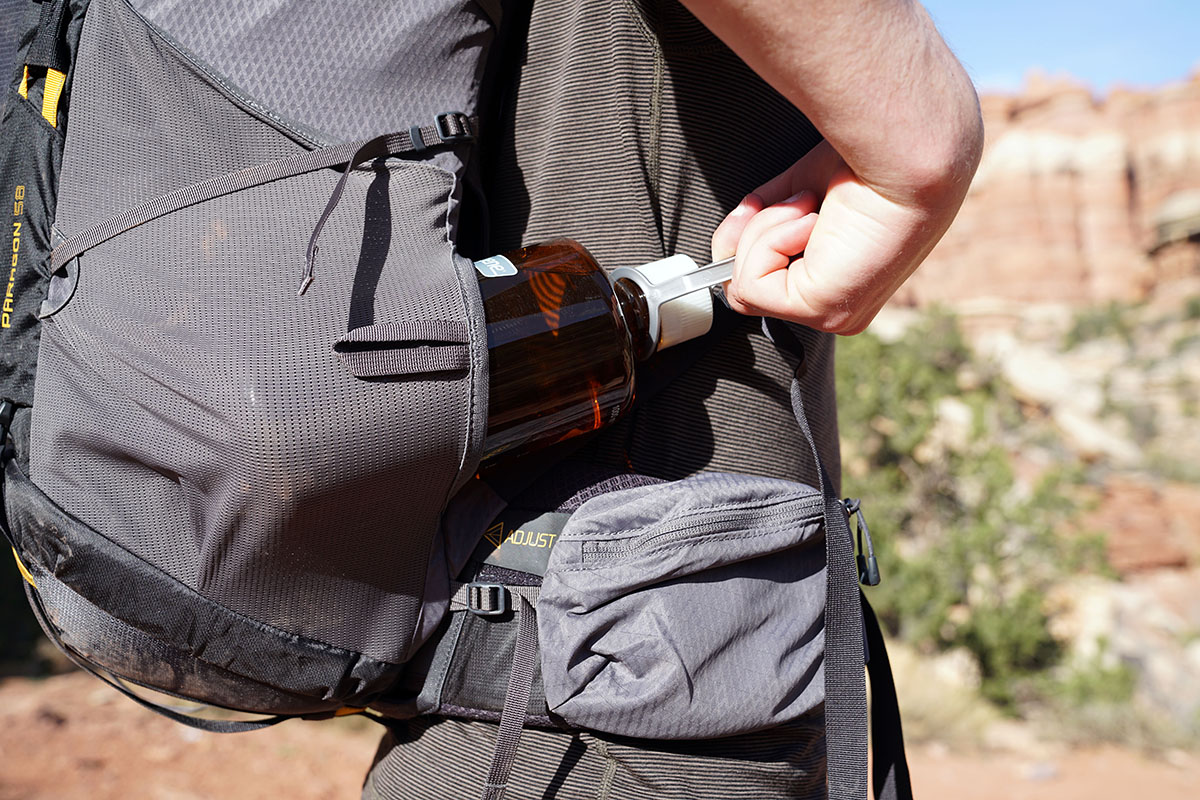
As the term indicates, the mouth opening refers to the diameter of the bottle with the top removed. There aren’t standardized measurements for what qualifies as narrow, standard, or wide, but some general characteristics apply. Logically, a narrow bottle will be the most difficult to fill (and some may require you to shrink down ice cubes to fit inside). Standard openings, like the Hydro Flask Standard Mouth above, often are a little larger than a narrow mouth bottle, but still only just wide enough to fit one or two ice cubes vertically at a time. Wide-mouth bottles are the most versatile and easiest to clean, but they’re also prone to spilling while taking a sip. An easy solution, however, is to get the wide-mouth style with a smaller cap and spout (Hydro Flask and many others sell several different lid options for their wide-mouth bottles).
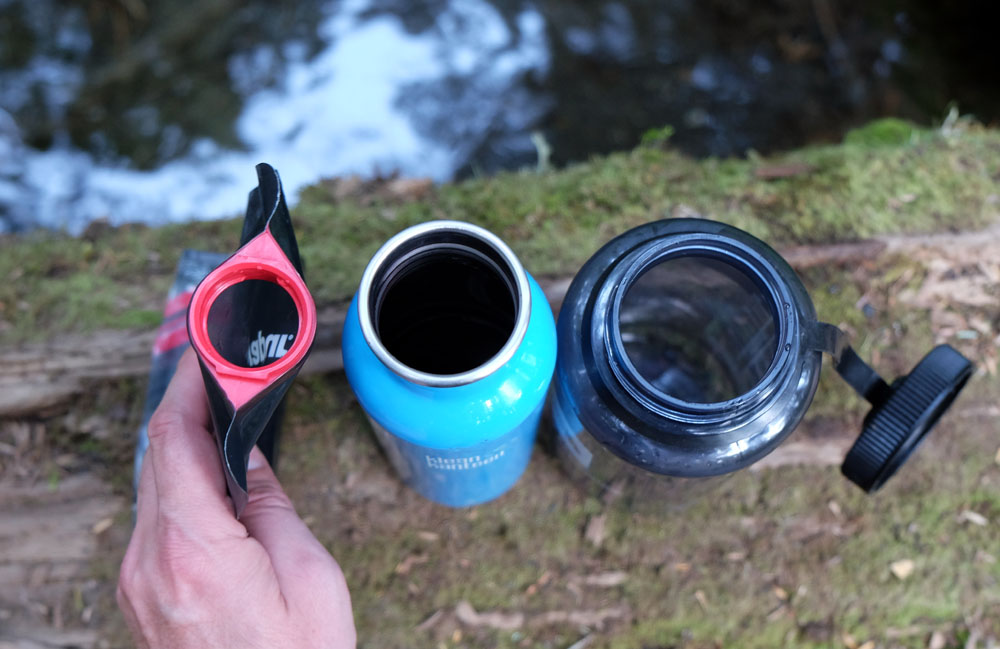
Traditional caps and straws/sippers aside, there are a number of other options when it comes to water bottle cap types. For example, the HydraPak Recon features a twistable cap with a small spout for drinking, the CamelBak Chute Mag Renew has a round, tapered opening underneath the magnetic cap, and HydraPak’s Stow has a small, twistable nozzle that requires squeezing the bottle to operate for easy on-the-go hydration. Again, this will ultimately come down to your preferences and what works best for you and your preferred activities. If you don’t love the common standard or wide-mouth openings, give one of the other styles a try.
For most, a simple screw-on or pop-top lid is sufficient for drinking water. However, a user-friendly integrated straw has its strong suits, including sipping on the go while reducing the risk of accidental spills. Our favorite straw-equipped design on the market is Owala’s FreeSip, which features a unique two-in-one spout that allows you to sip through the built-in straw or tilt the bottle back to chug through the wide-mouth opening. To achieve similar versatility, you can also often add a compatible straw cap to a traditional water bottle. For example, Hydro Flask sells straw lids for both their standard- and wide-mouth bottles, as well as press-in tops for their tumblers (keep in mind, these are not fully spill-proof).
All that said, straws do add some complexity and weight, which isn't great for hikers. Additionally, straw systems are another thing to clean, can collect mold easily, and many are not very easy or even capable of being taken apart. And finally, those extra parts and pieces create more places where leaks can develop. In general, we aren't as smitten with them as more traditional bottles, but realistically, the straw question is one of personal preference. If you're diligent about cleaning it and like the design, it could very well be your ideal water bottle design.
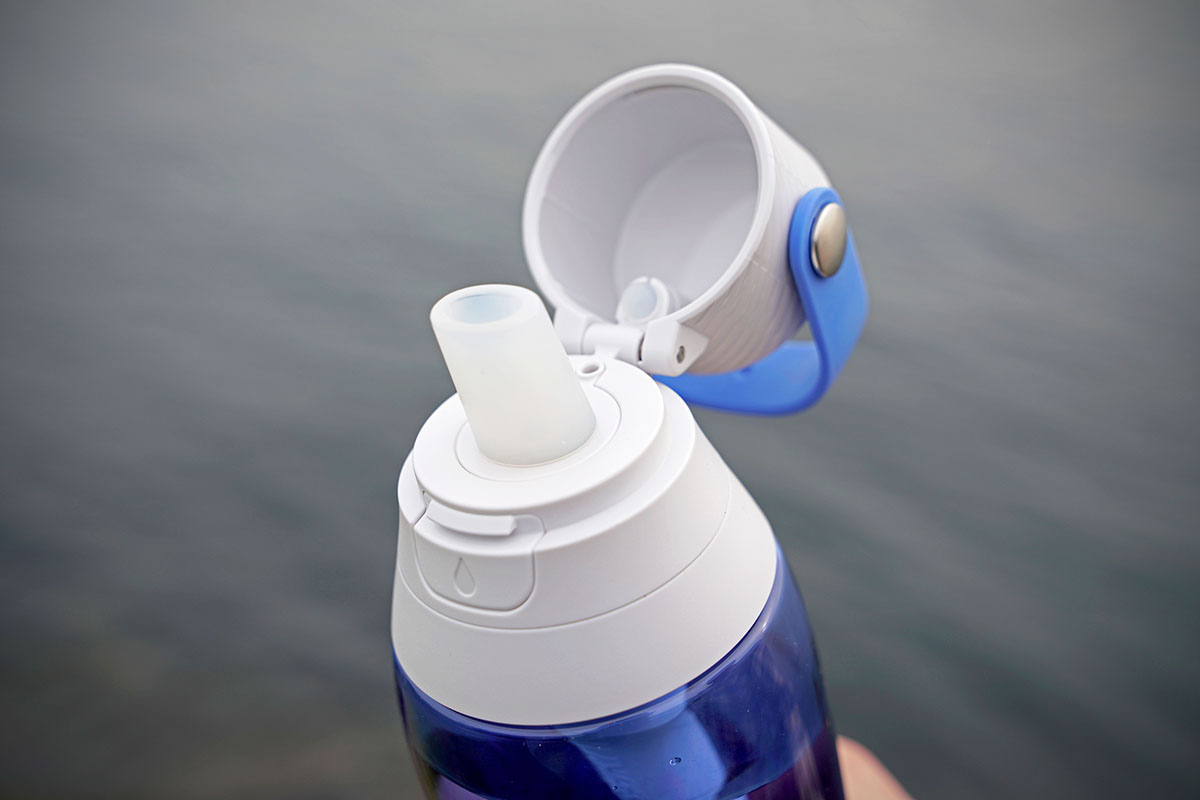
Bisphenol A (BPA) is a chemical used in hard plastics that—until fairly recently—was present in many water bottles. There is a fair amount of debate regarding the effects of BPA on humans, but the risk is that this potentially harmful chemical can leach from containers into your beverages. We aren't scientists here at Switchback Travel, but the good news is that BPA has all but disappeared from the water bottle industry (although it’s still found in other plastics).
If you’re concerned about BPA, look for clear labeling. You'll often see prominent stickers that say "BPA free" on the front, and all bottles on this list meet that criteria. If you don’t see this designation, keep in mind that many plastics are marked with recycling codes, and codes 3 and 7 are often made with BPA. It’s also important to remember that the chemical is not found in stainless steel water bottles, which make up a decent chunk of the market and a good portion of our list.
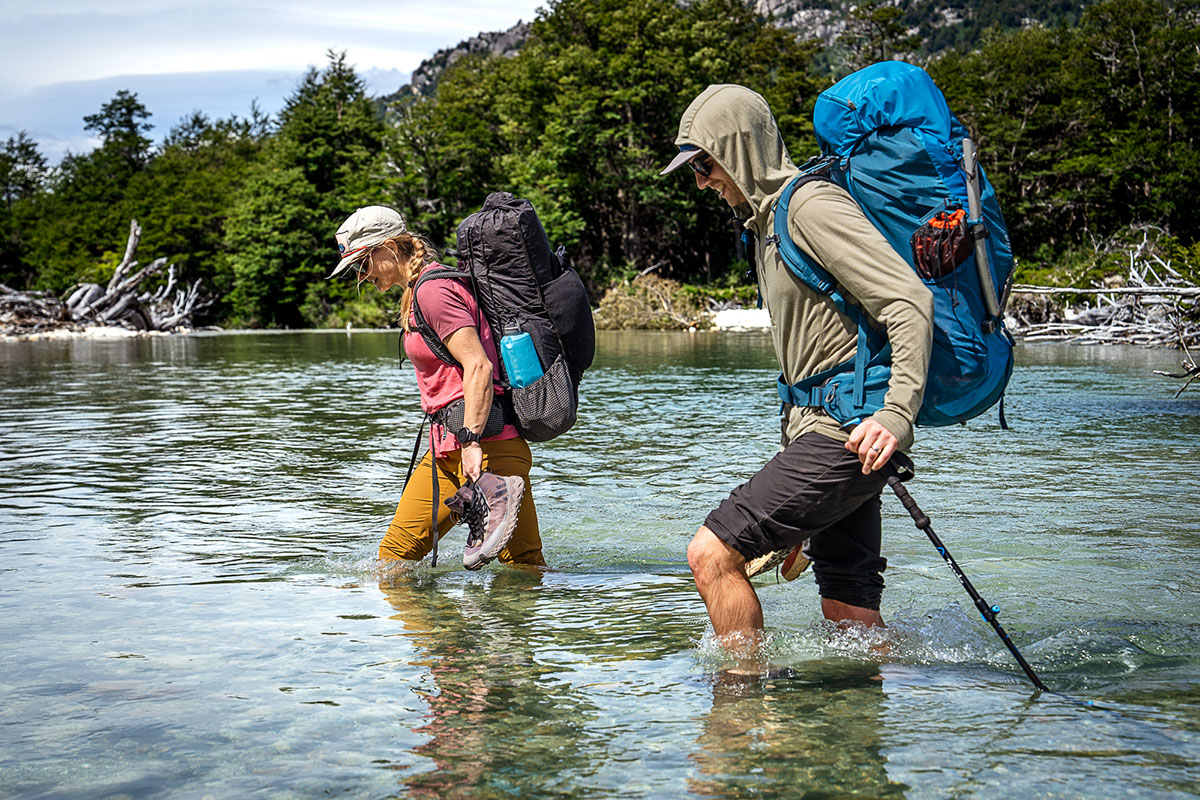
A common alternative for hiking and backpacking is a water reservoir. These consist of a main bladder or reservoir that holds the water and a drink tube with a bite valve at the end of it. With the tube placed along your backpack shoulder straps, you always have quick access to hydration, which means you’re more inclined to drink water—always a good thing on the trail. Weight and capacity are two additional reasons to go with a water reservoir. We’ve had great luck using both the CamelBak Crux and the Platypus Big Zip for anything from mountain biking to backpacking. Finally, most hydration sleeves are in the center of the pack, which also helps with weight distribution—water bottles on either side pocket can shift weight as you drink from one or the other. For a full list of options, check out our article on the best hydration bladders.
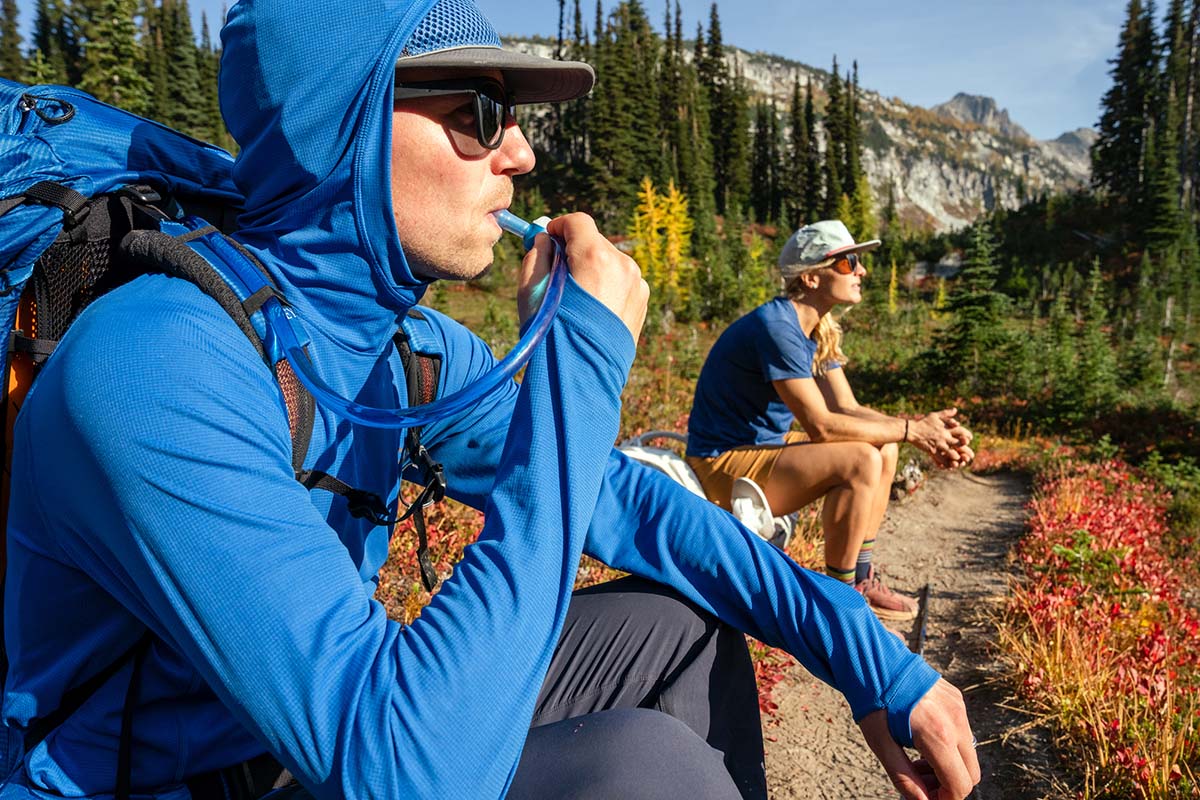
Generally, backpacks are built to accommodate both bottles and reservoirs, with side pockets for storing a bottle and sleeves built into the interior of the pack to slide in a bladder. However, we never rely on reservoirs as our sole water carrier, and particularly when heading out to more remote places. Why’s that? The connection between the reservoir and tube is a source of occasional failure, which can cause leakage inside a pack. This is something we experienced on a trip in Utah, and we unfortunately didn’t identify the leak very quickly, resulting in some wet clothing and gear. Another downside for hydration systems is their storage sleeve is most often deep inside the main compartment of your pack, while a bottle can quickly be grabbed and filled up. In the end, we always recommend bringing along a water bottle or two as a backup.
Cup holder compatibility is a deal-breaker for commuters, in particular. Having a water bottle that’s too big to fit in a cup holder causes all sorts of issues—we once had our 32-ounce Hydro Flask Wide Mouth soak our passenger seat because the screw-on cap wasn’t fully twisted on (we didn’t make that mistake again). This can also translate to backpack compatibility: Wide-bodied bottles that don’t fit into cup holders are often also too big or awkward to stuff into the side pocket of a pack when you go for a hike.
How can you tell whether or not a water bottle will fit in your cup holder before buying? As a general rule, most wide-bodied, larger-capacity bottles (32+ ounces) will be too big, including our top-ranked Nalgene Wide Mouth. Many soft-sided, collapsible bottles (like the Platypus Platy) also will pose an issue, but it depends on the shape. You can usually find the dimensions on the product page for any given water bottle or reach out to the manufacturer directly (REI also sometimes lists compatibility in their product specifications), but most of the time, sizing down to the 24-ounce version of a bottle or less will do the trick.
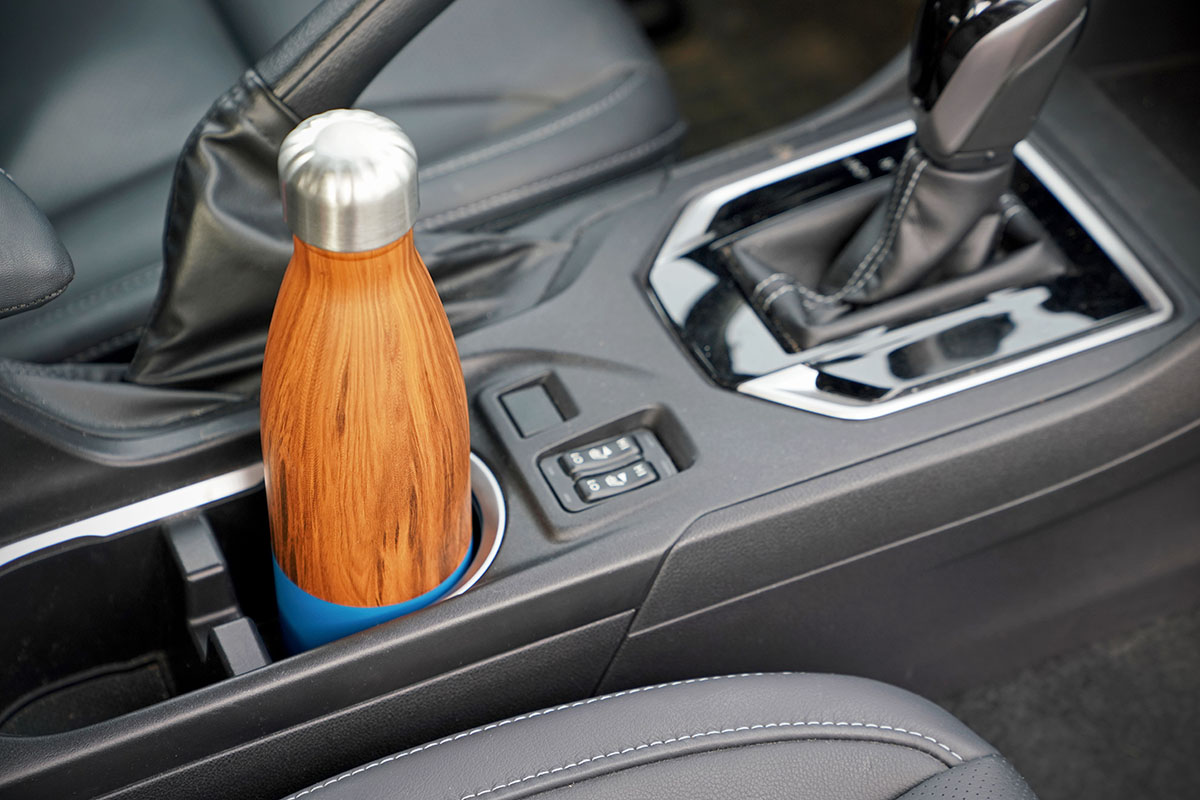
Our impact on the environment has never been of greater concern than it is today, and we’re happy to see outdoor gear brands stepping up to the plate by incorporating eco-friendlier materials into production. In the case of water bottles, this often means recycled plastic. From our list above, a few that stand out are the Nalgene Wide Mouth, which utilizes plastic destined for landfills, as well as the Yeti Yonder, HydraPak Recon, and CamelBak Chute Mag Renew. Klean Kanteen's Classic is also made from 90% post-consumer recycled stainless steel, and the brand is a certified B Corp and Climate Neutral-certified to boot, meaning they put a strong focus on environmental and sustainability efforts. As we mentioned above, any reusable water bottle will help cut down on waste over the long term compared to purchasing disposable plastic bottles, but if you’re someone who likes to shop intentionally, look for the use of recycled materials and brands that prioritize minimizing their impact.
No matter which type of water bottle you choose, regular cleaning will ensure better-tasting beverages, promote a longer lifespan, and get rid of harmful germs and bacteria. Often, the best way to clean a bottle is with hot, soapy water, in which case accessories like cleaning wands and straw brushes can be very helpful. And many plastic bottles, including the Nalgene Wide Mouth, are designed to go on the top rack of a dishwasher. Either way you wash your bottle, verifying you’ve cleaned out the bottom as well as the crevices and threads in the lid are important. Additionally, letting each part completely dry will reduce the chances of any mold or bacteria build up. If more intense cleaning is required, mixing a teaspoon of bleach with water is the recommended method from most manufacturers.
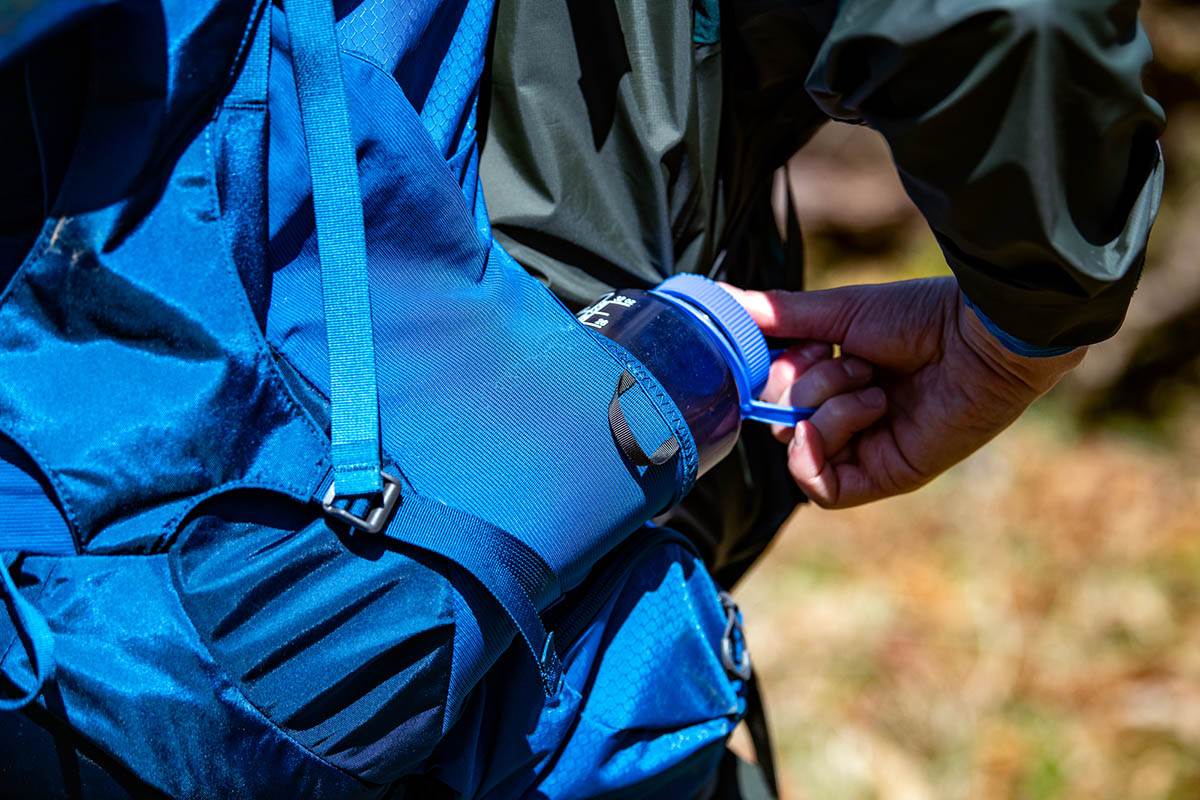
Our list above focuses on water bottles for hiking and daily use, but there are plenty of other options to consider depending on your objectives. For example, running-oriented designs often boast ergonomic shapes that fit nicely in the palm of your hand, and a couple of our favorites include the Nathan QuickSqueeze and Amphipod Hydraform Minimalist Handheld. Some (including the QuickSqueeze) also feature a small pouch or pocket for stashing keys, a card or ID, or other small valuables, which can be very handy on short runs that don’t warrant a running vest. Similarly, water bottles designed for biking have slimmer profiles designed to securely fit in most bike bottle cages, including popular options like the CamelBak Podium Big Chill and Co-op Cycles Purist. Regardless of your intended use, factors like capacity, insulation, weight, cap type, and mouth opening will all have an impact on performance and drinkability, so it can be helpful to do your research ahead of time to decide which size and style will suit your needs best.
Back to Our Top Water Bottle Picks Back to Our Water Bottle Comparison Table